Want a heads up when a new story drops? Subscribe here.
Can a startup business thrive in today’s market environment without a brand people like, engage with, and look up to? Sadly, the answer is no. In a world where we are overflowed with information, businesses have 0.05 seconds to impress the audience before they leave for good. That’s how long it takes people to form an opinion about your business.
Having an eye-catching, attention-grabbing startup branding strategy for your business might be just what makes people stay.
Naturally, what next comes to mind would be:
Without further ado, let’s dive right in!
Table of Contents
Why Is Branding Essential for Startup’s Growth
But why should you prioritize your startup brand-building process? Let us look at the 5 most important reasons why cultivating your brand should be a top priority no matter how much you have on your plate.
Startup Branding Helps Customers See Your Real Identity
Investing in your startup brand can help customers see the real you – your identity and everything else you represent.
And by identity, we don’t mean just your visual outline and design choices. We are talking about your mission, purpose, values, teams, and everything else that makes your company the way it is.
We are part of an overly saturated marketplace filled with companies having little to no impact on the general business world or their target audience. Startup brands that lack authenticity are the ones that never make it big. Those that succeed are not afraid to show their identity and stand by it proudly.
Startup Branding Raises Your Customers’ Awareness
How you operate your startup branding strategy allows you to grasp the attention of your target customers. Offering high-quality products or services is not reason enough for customers to follow your journey or purchase from you. Nowadays, people need a lot more than that. What they need is that one thing that makes you exceptional – be it your founder story, a list of core values you represent, or anything else you can think of.
Your startup branding allows you to present your strongest selling points and any benefits that come with your services uniquely and engagingly. Always hop on this opportunity and catch your customers before they jump on someone who has done their homework.
Startup Branding Builds Credibility in the Long Run
Reputation is fundamental, but until you build a strong flow of positive reviews to back you up, you need to think of other sharp ways to level up your credibility.
An exceptionally developed startup brand can do just that. Think about it – with little to no reputation behind your back, what you are doing is asking your customers to take a chance with your products or services. And while some may be happy to take a risk like that, others may be reluctant to give it a try. Professional and catchy startup branding is a proper way to introduce yourself to the world and show your potential customers that your services are relevant and here for good.
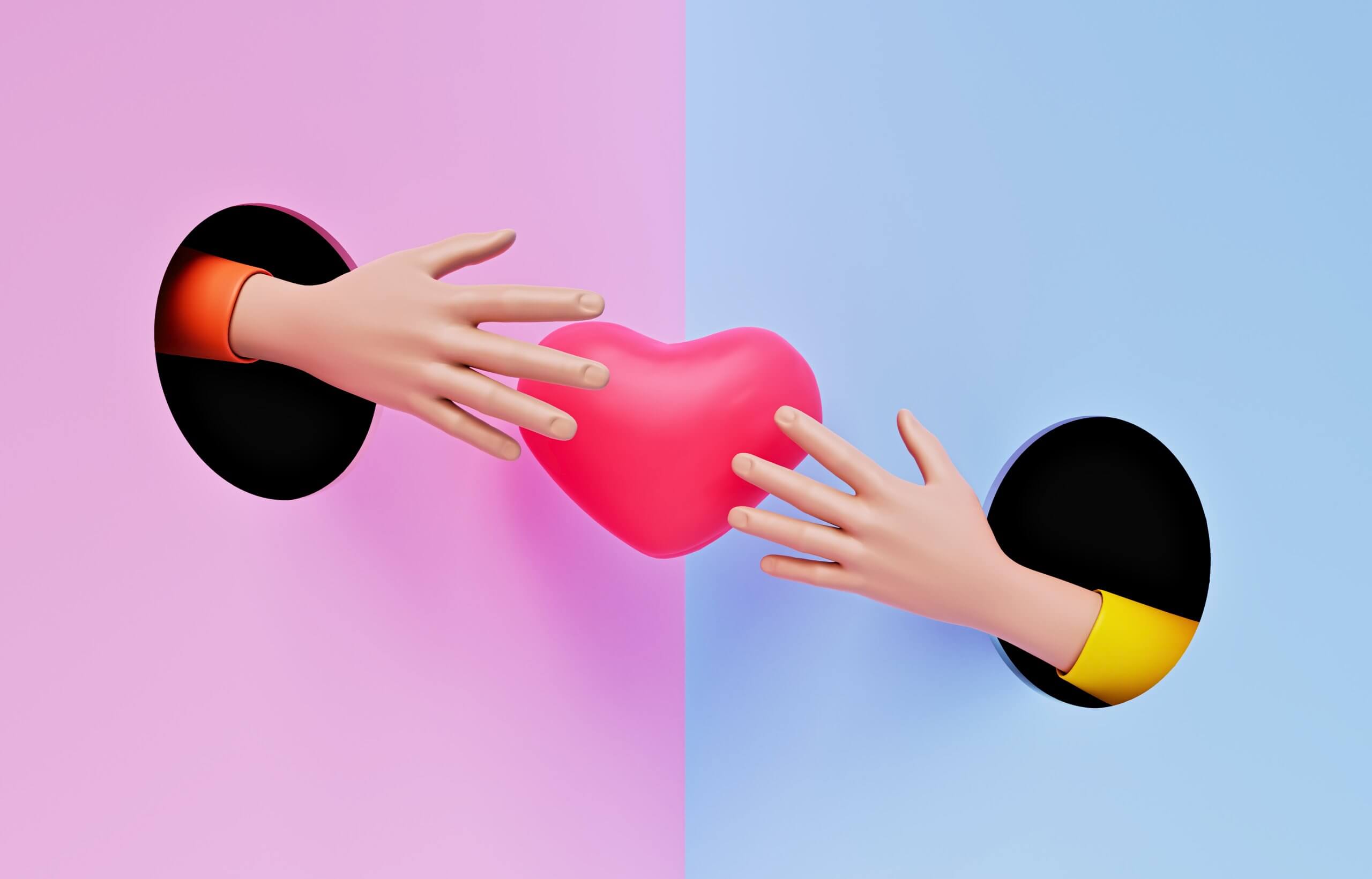
Startup Branding Builds Loyalty and Emotional Connection With Your Customers
Evoking the right emotions should be the core foundation of any good startup branding. The more positive and happy emotions your startup brand instills in your customers, the more they will want to engage with you in the long run.
Depending on your niche and products, think about what emotions you want first-time buyers to associate you with every time they hear about you. Then do more than your best to evoke those emotions in your potential customers through your brand visuals and storytelling.
Creating a strong emotional connection is what will turn your one-time customers into regulars, building their loyalty and skyrocketing your revenue all at the same time.
Startup Branding Allows You to Communicate With Your Audience Consistently
Every now and then, you will have to deal with concerned customers and issues with your products/services. Resolving customer pain is part of the process, and startup branding might help you do it more gracefully.
Being consistent with your startup branding helps you communicate with your customers across different marketing channels without any difficulty. One of the many requirements that go into creating a startup brand includes having and following a clear tone of voice. Whether you are responding to a positive review or negative feedback, being consistent and following your brand guidelines will distinguish you from all the other businesses that fail to do so.
Is Startup Branding Different Than Digital Marketing?
Are startup branding and marketing two terms that hold the same meaning? Are they the two sides of the same coin? Or do they have nothing in common? Although the topic of startup branding is currently more trendy than ever, many still have baffling thoughts about the relation between these terms.
Let’s break the two terms down.
Whenever you think of what processes, sets of tools, strategies, or practices to use to promote your business, that is marketing. It is a mean you can use to reach people who potentially want to engage with your business. You use marketing to show your unique selling propositions, demonstrating to your audience how your product can resolve their customer pain.
Whenever you are brainstorming ways to gain customers’ trust so that they continue to engage with you in the long run, that is branding. The process of defining your business’ missions, values, or purpose to help you interact, engage with and retain your customers is what we know as branding. Branding differentiates you from your competitors, showing your audience your principles and values and how using your products supports those beliefs.
Thanks to a wide range of tools today, you can effortlessly and quite successfully measure whether your marketing efforts are paying off. You don’t get that for startup branding. No instrument can tell you if your startup branding strategy is driving the results you expect.

Furthermore, you can easily change your marketing strategy however often you want to test out new tools, concepts, or ideas and see what works for you and what doesn’t. You don’t get to do that with your startup branding. You don’t get to change your identity whenever you like. Consistency is your startup branding’s number 1 weapon that builds a solid, long-lasting relationship with your customers.
On some occasions, businesses rebrand themselves by transforming their corporate image to correspond to current events and better differentiate themselves from all their competitors. Yet, they don’t just wake up one day deciding that they are not satisfied with their branding anymore and come up with a new brand persona in a heartbeat. Far from that, rebranding is a long, thought-out process that consists of analyses, going through statistics, and long-hour discussions with all involved team members. And it certainly doesn’t happen once every few months.
Startups get a clean slate. That’s why it’s crucial to cultivate your brand the right way from the very beginning. Considering the high percentage of startups that fail during their first year on the market (18.4%), creating a brand that will last is crucial.
Branding and marketing are two very different concepts that seem to overlap regarding their purpose. Both aim to make your business more presentable and sellable to your audience. However, both use different approaches, with each being equally important for the big picture as the other.
That is because branding alone may not be enough to get you to the right customers for your business. If you can’t reach a big enough audience, you can rely on marketing to distribute your message and get to more people. However, whether all the people you’ve reached, thanks to the marketing tools, will stay, engage, and purchase from you depends on how you’ve cultivated your startup branding.
Time-Proven Startup Brand Elements That You Should Not Overlook
Now that we’ve discussed the nuances and differences between branding and marketing and how they both help the growth of startups – let’s move on to describing the elements that constitute a well-developed brand.
Startup Brand Identity

Let’s begin with the most mentioned element yet – brand identity. A brand identity is that special ingredient that gives flavor to the business, shaping people’s perception of your company and helping them set you apart from all other competitors on the market.
Memorable brand identities have a lot to do with outstanding design skills. Successful startup branding comprises different design elements, including typography, logo, color palette, etc.
A brand identity is essentially the visual aspect of your startup. The first thing anyone who encounters your business’ social media profile, website, or ads will see is your visual representation.
Considering that, making a positive first impression in the eyes of your potential clients is a definite must. According to research, it takes 0.05 seconds to form an opinion about a website.
In this small timeframe, people can scan the website and determine whether it does the deal for them or it doesn’t. And while you may wonder if they even have the time to scrutinize every one of your design choices, let us tell you that they don’t.
They may not be able to observe your logo, typography, or color choices separately, but they always look at the big picture – how well everything goes together. Therefore, not only is it crucial to think each element through, but it is also essential to check if those tangible elements make a presentable team that can transform your visual identity into one to remember.
After all, you’ve got no time to waste. So one thing stands unanswered – how to develop a strong startup brand identity? Keep reading to find the answers to this question.
Startup Brand Voice
Our next element is brand voice. Working on creating a distinctive brand voice is another must you should not overlook. Why?
Well, it is pretty simple. Your brand voice is a portrait of your personality – the unique way you express yourself, your vision, values, etc.
You will use your brand voice daily – in your blogs, social media posts, client communications, emails, advertisements, etc. – so make sure you create one that corresponds with the persona you are trying to build.
A brand voice that perfectly suits one business niche may sound disastrous for another. For instance, a company selling hiking equipment and apparel will adopt a more edgy and adventurous tone of voice that will do no good for a company that sells luxurious, high-end garments. A sophisticated, complementary, and fancy choice of words will better suit the latter.
Looking for a surefire way to stay in the spotlight for as long as possible? Use words that correspond with what you are selling.
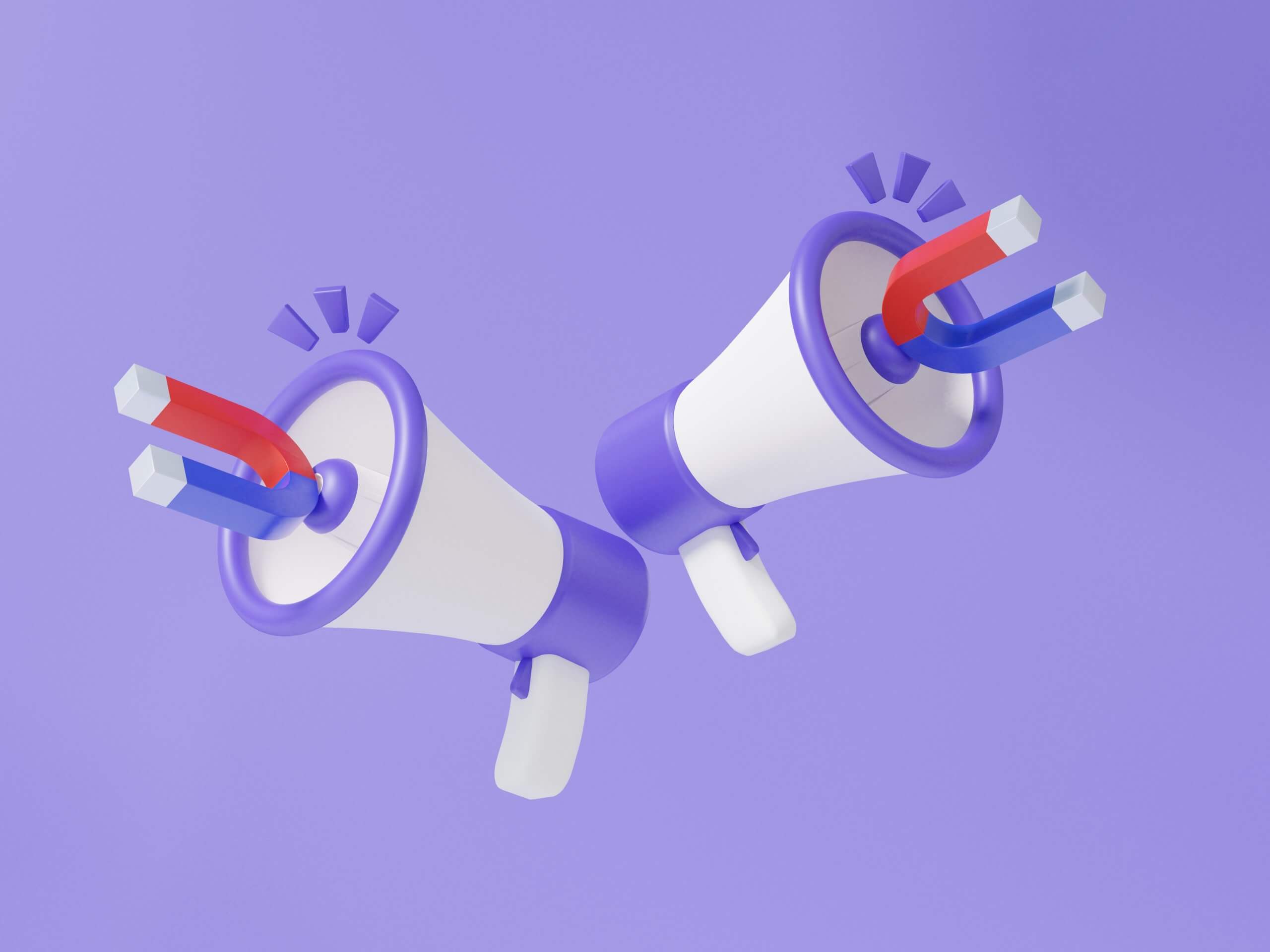
How to Create a Startup Brand Voice That Works for You?
The first thing you need to do before anything else is to define your company’s mission and core values. Get a piece of paper, or create a new document and fill it with words that describe your startup’s personality. Are you going to be casual, nonchalant, and friendly? Or are you going to be formal, polished, and calm? Don’t forget to align your personality with your products/services and target audience. Think it through and write it all down.
Once you are ready with this, start thinking of words and phrases that correspond with your personality. Write those down and turn them into trademark words you will often use as a reference to communicate with your audience.
To be sure you are always consistent with your wording and expressions, you can create a small guide for your brand voice. Include your personality traits and trademark words. To make it more thorough, you can create a tone framework – describe how you want to sound in different contexts.
Words are a powerful weapon. You can either make them your friend or the enemy that has the potential to ruin your startup. And you’d better not make them your enemy. Take the time and develop a unique brand voice that will work for you. Once you’ve created your brand voice, you are one step closer to establishing a long-lasting brand.
Startup Brand Values
Remember how we briefly mentioned that a brand should always follow its values and beliefs and never make any exceptions when it comes to them? Now let’s discuss in more detail how a startup company can define its values and build a brand around them.
Values are the ideals that guide any company’s actions. Your values quite literally give meaning to your startup brand’s existence. They should always reflect the important topics, ideas, and beliefs your brand will proudly represent, support, and defend.
Every action a brand takes should correspond with and be reflective of its values. Starting from simple things like creating its monthly or yearly social media strategy to publishing press releases, communicating with clients and employees, and strategic decision-making processes.
Did you know that according to research by the Havas Group, 77% of all tested consumers reported they prefer purchasing from brands that share the same values? Engaging with a set of values and, more importantly, living up to them shows your potential customers that you do something meaningful apart from growing your revenue streams.
It lets them see that your startup brand is genuine and cares about problems much more significant than simple products or services. Humanizing your brand is the best thing you can do to make it work in the long run.
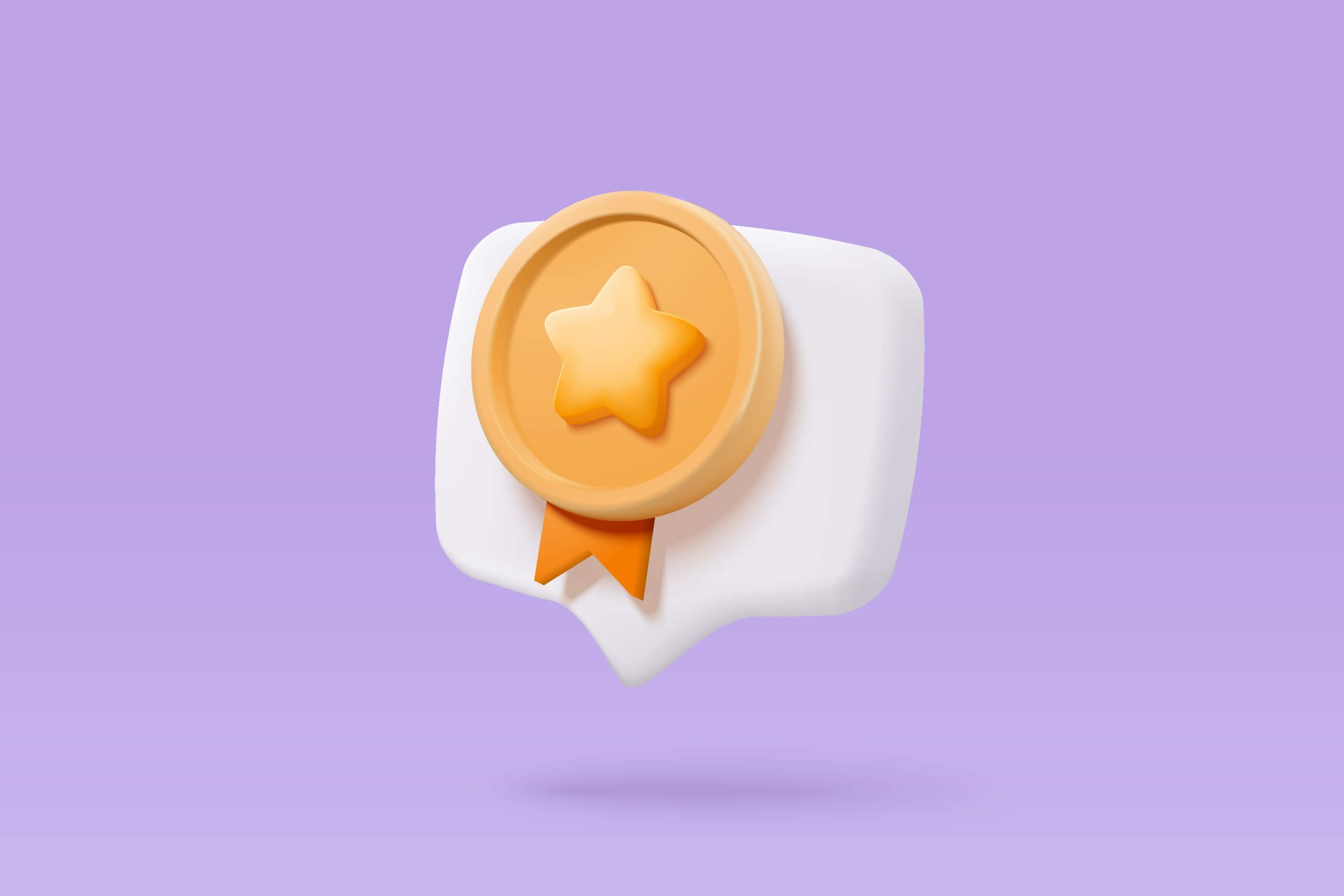
How to Define Your Startup Brand Values?
It always comes to brainstorming. Sit down with your team and think about what your business should represent. Analyze your competitors and contemplate if there are things they don’t do that might make a difference. Look at their audience and your potential customers for signs that show you what values they appreciate most and implement them in your business model.
Living up to your values is not always an easy task. Thus, don’t go overboard filling a complete list of values you have no intention of following. Look at your list again and narrow it down to 3-to 5 primary beliefs.
A good tip when choosing the values and beliefs for a startup is to create a list of guiding principles that will show you how to act and behave to meet the values and achieve the objectives.
With transparency being one of the most attractive brand qualities for 66% of all respondents in the research by Accenture Strategy, you will see more and more brands adding it to their list of values. But how many of them practice what they preach?
If you pick transparency among your top values, what will be the guiding principle you will follow?
Here’s an example:
- Publish all the details regarding your pricing models and strategy.
- Communicate the origin and manufacture of your products and services.
- Address clients’ negative feedback in the most informative and friendly way possible.
Being consistent is a tip we will never get tired of repeating. Include your values and guiding principles in your brand guidelines, repeat them like a mantra and live by them every day your business is open on the market.
Implement your values and beliefs across your brand’s assets, and results will soon follow.
Startup Brand Mission
Next on our list of things that you need to define to cultivate a long-lasting brand is brand mission.
Your startup’s mission is here to communicate your purpose, objectives, and how you imagine achieving it all through your business. It aims to give your audience an actionable plan of what your company does, why it does it, and what impact it wants to make.
Companies usually visualize their brand mission either on their About us pages or homepages. It is usually a small section of the text, sometimes even one sentence, showing the reasons your brand exists.
As mentioned, potential clients are looking for some sort of attachment before they purchase from you. A catchy, well-described startup branding mission can serve as the perfect pitch for all new-coming visitors to your website and social media accounts. It is also a way to attract new employees who will recognize your mission as their own and will happily join your team.

How to Create Your Startup Brand’s Mission Statement?
Competitors analyses are always a good step to take. Browse the web, and look at how your competitors have defined their mission.
Now that you’ve gathered some inspiration, you can start brainstorming authentic ways to present your business mission. Think of your goals and what else you want to accomplish in the upcoming years. While you can change your mission as you grow and your goals change, you should always define it with longevity in mind.
If possible, include your team or employees in the brainstorming process. Not only would they help you define your business’ mission, but they would also feel appreciated and heard, which, in exchange, would increase their engagement with your company.
Here are some questions to guide you on the way:
- How does my product/service help and adds value to my audience?
- What kind of impact do I want to leave on customers?
- How long would it take to achieve my goals? Are they realistic?
- How can I embody the mission in every aspect of my company?
Startup Brand Positioning
Creating a startup brand consists of lots of research, data, and statistics. Defining your brand positioning statement makes no exception. It should depict your target market and show a holistic image of how you’d want to be perceived by your clients.
Brands perceived as unique, valuable, credible, or favorable have successfully developed a strong brand positioning strategy.
Differentiation from your competitors might not be enough to get your startup on top. You have to do something that stands you out from all the rest of your industry. Turning your brand into a generic name for all similar products or services in your niche is a surefire sign you are on the right track.
For instance, take Coca-Cola. The brand is the first thing that comes to mind whenever you think or mention the soda-like beverage. The brand has many competitors, with Pepsi being its most popular one, but most people associate every cola drink with Coca-Cola.

How to Create a Startup Brand Positioning Strategy?
Creating each of the brand aspects requires competitor analysis and target audience analysis. Brand positioning makes no exception. It all revolves around understanding your desired customers’ needs and how your competitors have positioned themselves.
Brainstorm your way to creating a powerful brand positioning statement that corresponds with your company’s values, mission, and beliefs.
When developing your brand positioning strategy, always consider the following tips. Make your startup brand positioning:
- inspiring and motivational for your audience
- difficult to copy from your competitors and strong enough to withhold counterattacks from them
- focused on your core target audience and their particular needs
- in a way that enables your brand to grow in the long run
🔥 Tip: Hundreds of growing businesses use Socialfix to create their startup brand strategy and showcase their products and services. 
What Your Startup Brand Identity Playbook Should Consist Of
We’ve covered the most fundamental startup brand elements. However, creating a brand is a much more thorough process. You now know that many of the elements consist of subcomponents that are equally important for successful startup branding. With brand identity being responsible for the visual layout of your startup brand, it’s safe to guess we have a lot more to say about it. Let’s look at the components that comprise the identity of a well-developed brand.

Startup Brand Name
It all begins with a name. And while the importance of what you will call your startup brand is self-explanatory, coming up with a meaningful yet intriguing and catchy name is no easy task. Many startup companies struggle to pick a name that corresponds with their purpose and resonates with their audience.
And while some solve their problems with the help of name-generating tools, others spend months before launching, coming up with a name that sounds good, looks fine on banners and other startup branding materials, and finally has a free domain for the upcoming website.
And despite all the efforts companies put into brainstorming a name, there’s no magic formula that can ensure they’ve picked a good one. However, some traits make a brand name a remarkable one.
- Distinctive – Pick something unique that would set you apart from your competitors.
- Meaningful – Pick a name that corresponds with your ideals and would cultivate positive emotions in your customers.
- Accessible – A name that is easy to remember, type, and find in the search engines, is a name that would help your brand.
- Usable – Your name should be easily adaptable and functional for a variety of design elements – logos, icons, banners, etc.
- Protectable – If possible, go for a name you can later trademark.
Startup Logo
Wondering what the cornerstone of your brand identity is? We can say without any ounce of doubt – it is your logo. That symbol will represent your company and identity to the world. Hence, your logo needs to be attention-grabbing.
Your logo – whether it’s a graphic mark, stylized name, or other drawings – will represent and reflect the value of your brand. Logos play such a big part in customers’ decision-making processes that a business can’t succeed if they don’t have a memorable logo by its side. But what is a good brand logo? What components make one logo distinguishable in the minds of the audience?
Simply put, a good logo communicates your value as a brand. It represents your company, its purpose, and its products. It stays in the minds of your audience until it becomes a generic symbol they will associate your products with.
Being the foundation of your startup brand identity, your logo is a tool that can increase your customers’ loyalty to your company. Not only that, but it also helps the audience differentiate your brand from all the rest on the market. Hence, it is essential that your logo is unique and not a copycat of your competitors’ logos.
Logos have been around for centuries. Not in the same format as we use them today and maybe not for the same purpose. However, even in the earliest days, people have used logos to differentiate themselves. And while we are not diving into logos’ history today, it is good to know that some of the first emblems date back to the middle ages when the aristocracy used them to distinguish themselves from the other wealthy families.

Do Logos Change Over Time?
Web design trends and tendencies come and go in a blink of an eye, so some companies often change their logo appearances to adapt to whatever new craze is coming their way. Yes, the evolution in the design industry is inevitable, and no matter how timeless you think your logo may be, there will come a time you will have to go where the wind blows and make a change or two in your logo’s looks.
Yet, is changing your logo every time a new trend emerges on the market a must? Definitely not. On the contrary, your logo should be classy enough to withhold temporary tendencies. As mentioned, what is trendy today might be considered old-fashioned tomorrow, so don’t jump into the rabbit hole of trendiness. You will never be able to keep up with all the trends, and that’s perfectly fine.
Go for a classy logo that can represent your brand for the next couple of years. And when you feel the moment has come, don’t be afraid to ask your design team to update your logo.
The Evolution of the Logo Design
Logos morphing and changing their designs are nothing new. Most big companies and enterprises, including Google, Apple, Coca-Cola, McDonald’s, etc., have regularly changed their logos over the years. While some change their appearance completely, others preserve their logos’ most significant elements and work around that.
But how have logos changed, and what are the current trends companies follow? Well, it is safe to say that they’ve been evolving hand in hand with technological advancement. There are currently almost no limitations on how and what a logo can look like. Yet today’s social climate is all about being a minimalist. Influenced by this trend, startups and other well-established companies have changed their representative symbols.
In the past, companies preferred more colorful, eye-catching, captivating, and detail-oriented logos. For instance, let’s talk about the world-renowned company Apple. Apple’s current logo is one of the most popular and recognizable logos globally speaking. But before the half-bitten apple became the brand’s iconic symbol, the company used a more detailed and complex logo. Despite its original concept or outstanding execution, it didn’t work effectively as a logo.
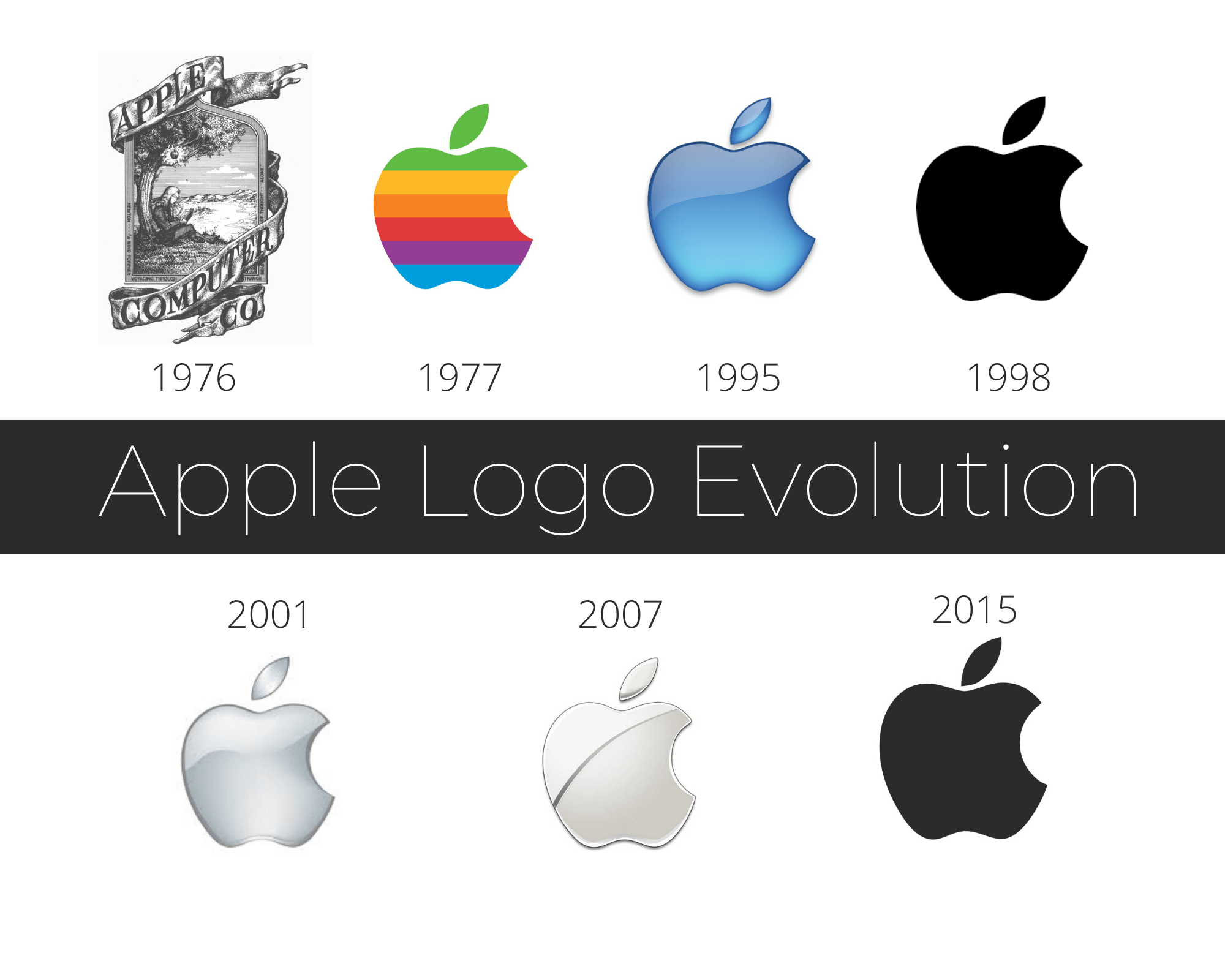
The brand only lasted a year with its original logo before changing it to a colorful rainbow version of the logo we know today, back in 1977.
Despite being intriguing to look at, complex designs lack functionality, which is one of the most crucial features a logo should have. Your logo will be everywhere – from pamphlets or billboards promoting your business to somewhere on your product, showcasing its origin. It needs to be easily printable, usable, and functional.
That’s the reason many brands jumped on the simplifying-your-logo trend. Simple logos look stylish and sophisticated and are easier to work with, making them preferable options for many startup companies.
Changing your logo somewhere on the journey is inevitable. Yet you can do your best to avoid making such changes regularly by picking something evergreen, simple, and that looks good on a wide range of surfaces, textures, and materials.
Typography
The next element that should hold its special place in your brand guidelines is typography. Communicating with clients and conveying the proper type of messages is not only about the words you use. It is also about how you use them, arrange them and visualize them for your readers.
Typography helps brands deliver a clear message in a visually appealing manner that captivates the reader’s eyes and makes them want to learn more about you. Those not involved in the design industry often share the idea that typography is nothing more than picking a font. On the contrary, it is much more than that.
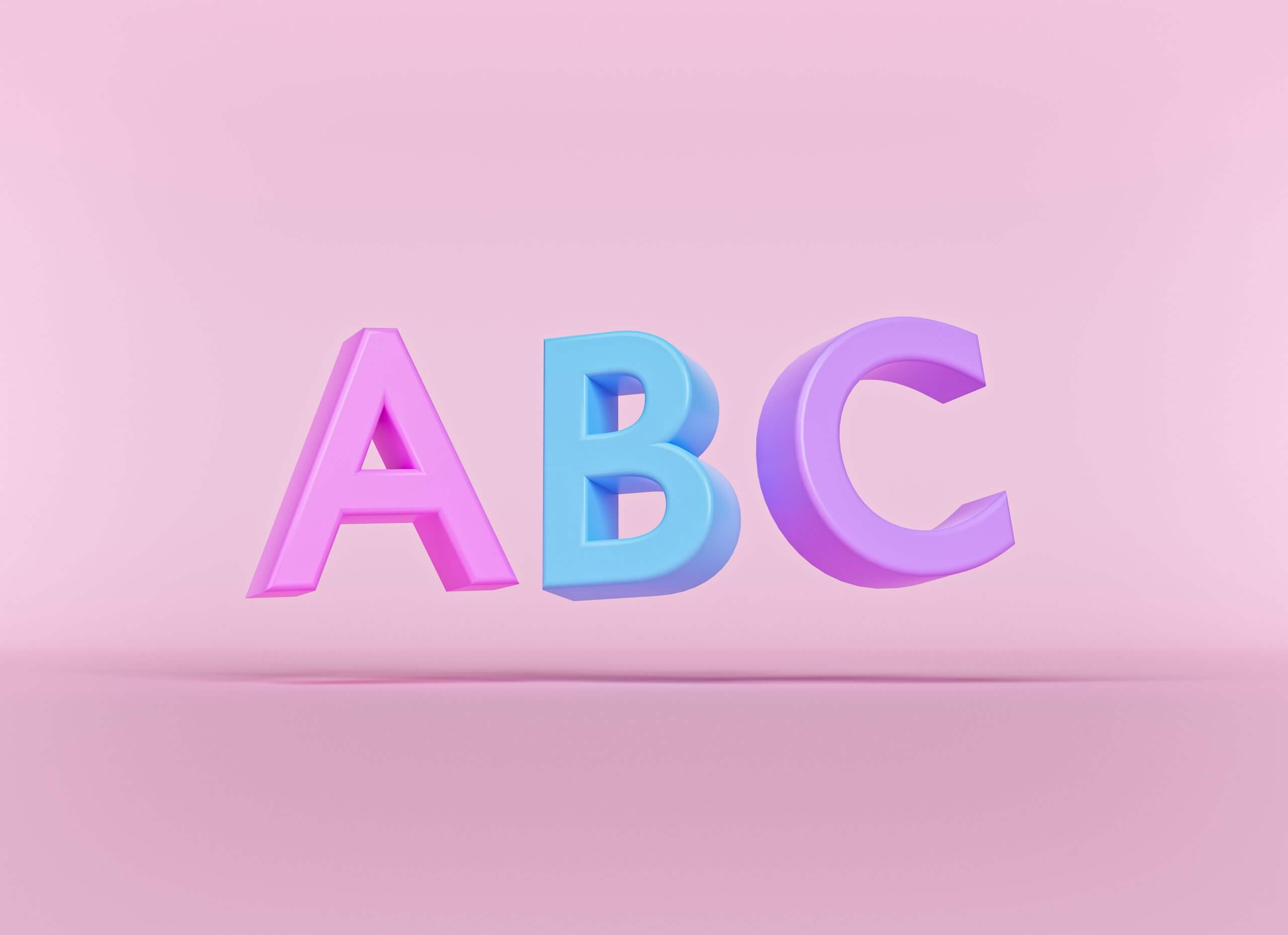
Why Should You Spend Time on Your Startup Branding Typography?
When done right, typography will drive people to your content. In an era where everything is easily accessible, and people can find information within a few clicks on their mobile devices, it is more important than ever to grab their attention as fast as possible.
Typography is just another tool you could use to achieve that more easily. How a text is portrayed can invoke specific feelings or emotions in those who read it. It is a means that will help your clients, visitors, and potential new customers build stronger associations with your brand.
You will most likely even incorporate typography in your logo design. And just like we talked about, your logo will be everywhere – prints, products, advertisement placements, etc. Typography is an integral part of your brand identity, don’t underestimate it.
Can Psychology Help You Do Your Typography Better?
Thanks to typography, your brand can invoke certain emotional responses from your visitors. And psychology plays a big part in this process. We associate shapes and forms with different emotions. Hence, knowing what evokes the kind of emotion you want your audience to feel, you can use it to your advantage.
For instance, circles and circular shapes are associated with happiness, friendliness, and mischievousness. They don’t give the same serious vibe triangular and rectangular shapes do.
When choosing your fonts and creating your typography strategy, you can dive deep into the vast field of psychology. Understanding Gestalt principles, emotions, and how shapes affect us will get you another step closer to cultivating a unique brand.
Color Palette for Startup Branding
Another integral part of the process of making your brand a memorable one is choosing the right colors to match your identity. We won’t stress further the importance of your brand being visually appealing so that it catches your audience’s attention faster than your competitors. A cleverly selected color scheme could be one of your greatest aces up your sleeve.
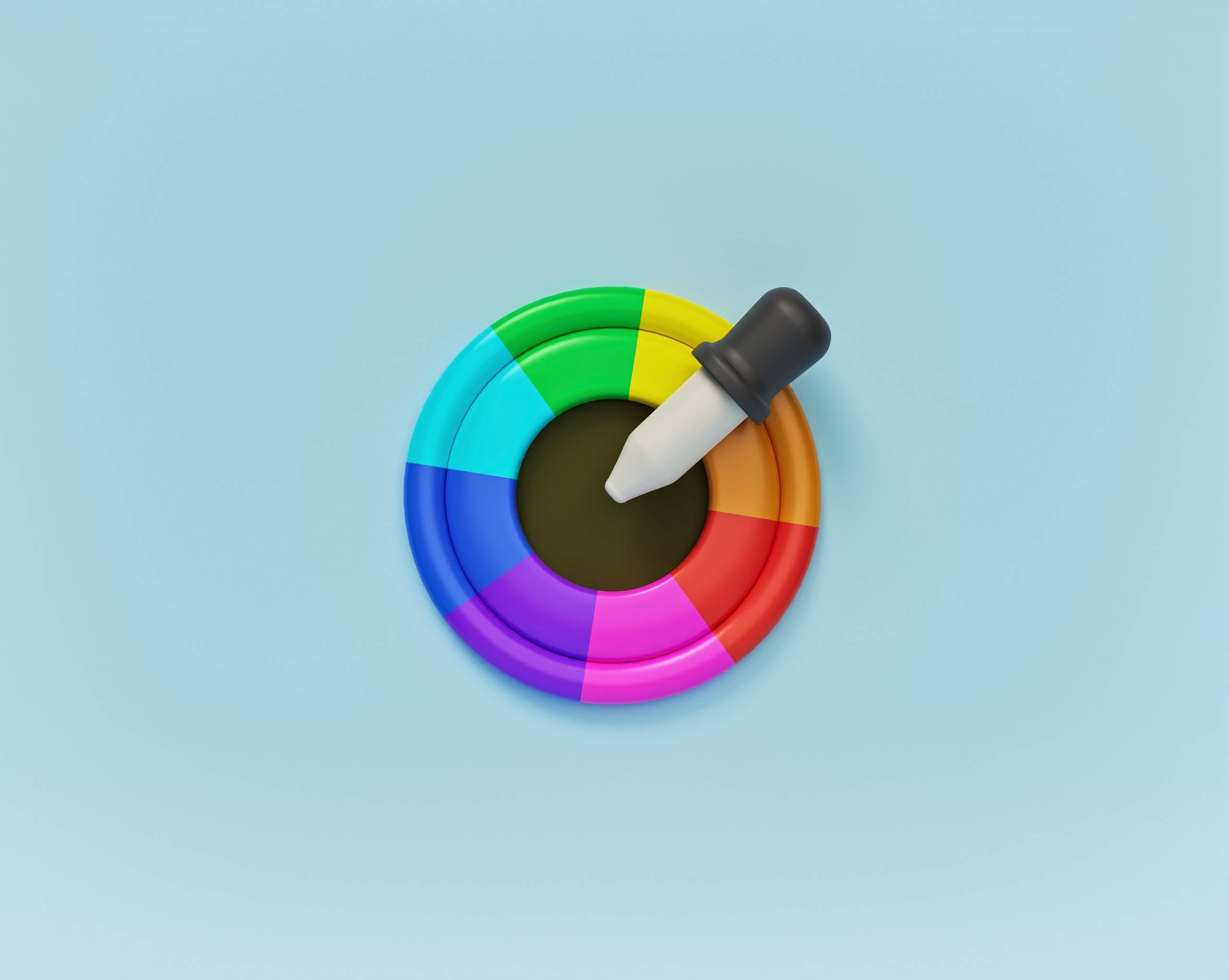
And if psychology could help you with your fonts, imagine how much more it could tell you about colors. Yet again, invoking particular emotions with your colors is your primary goal.
Understanding what colors mean and how people perceive them is the first step to selecting your primary brand colors.
White
White is all about innocence, purity, peace, and cleanliness. It symbolizes a fresh start – hence you will often see startups or companies undergoing rebranding using it as their primary color. White is sometimes seen as a little sterile or stagnant, so you should be careful if you decide to go with it.
It is a color that always comes in hand with another one, as it is impossible to use white as a stand-alone color. Combining it with another color could be tricky, so you should be mindful of the one you pick.
You will mostly see brands with white logos on a black background. The reason? It’s a classic combo that never goes out of style. Black and white is an endless love story, and more and more brands see the potential and benefits of getting that clean, elevated look for their logos.
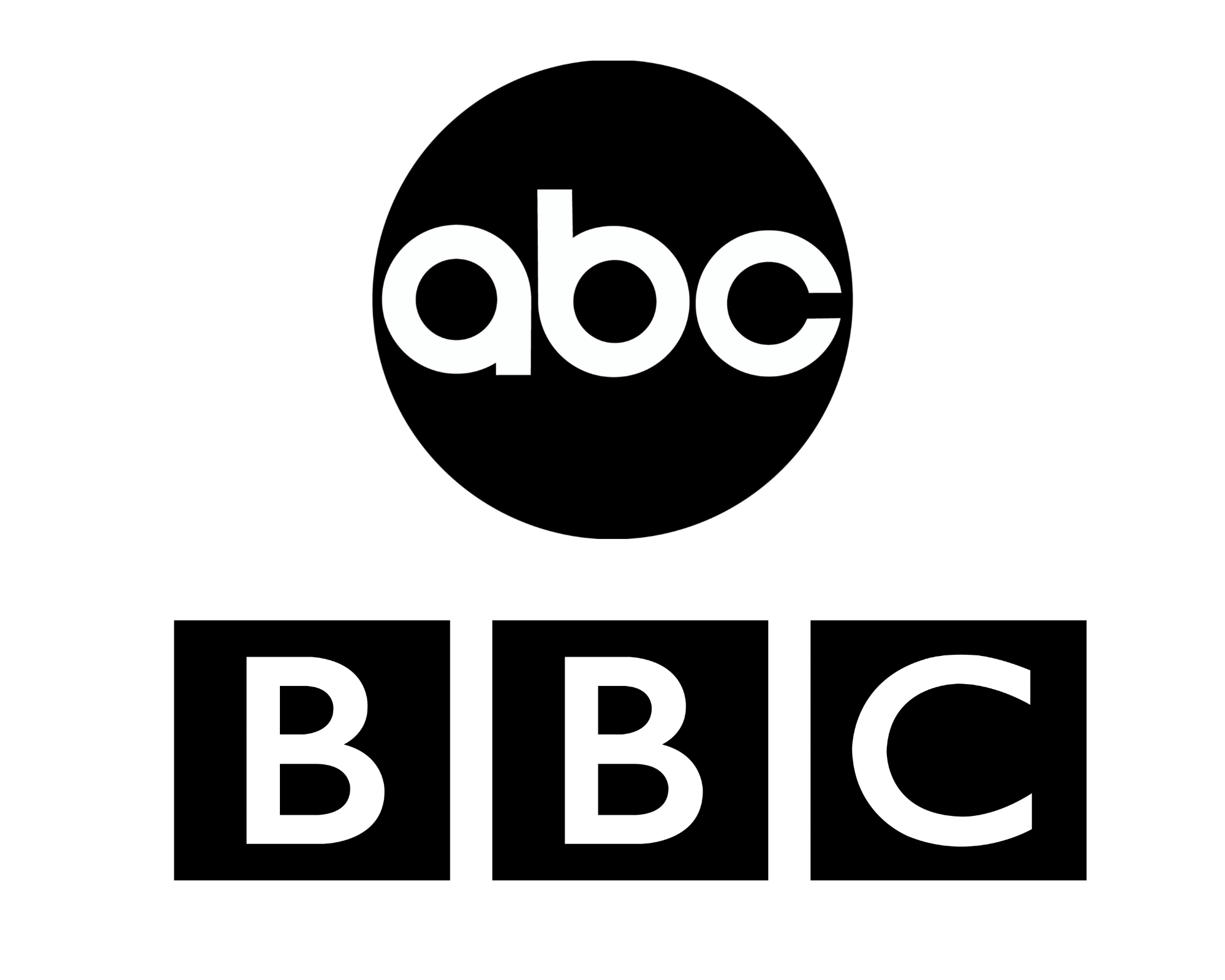
Companies like BBC and ABC use the classic combo of white logo letters on a black background to create a sense of strength and authority.
Black
Black is the epitome of elegance and sophistication. The boldness of this color makes it perfect for startups, going for the influential, reliable, yet significant vibe. It gives a sense of luxury and something not easily attainable by the common public.
Lots of high-end fashion brands use this color in their logos and general color schemes to denote class, timeless elegance, grace, and beauty. Companies like Chanel and Gucci have successfully incorporated this dark color into their brand identity.
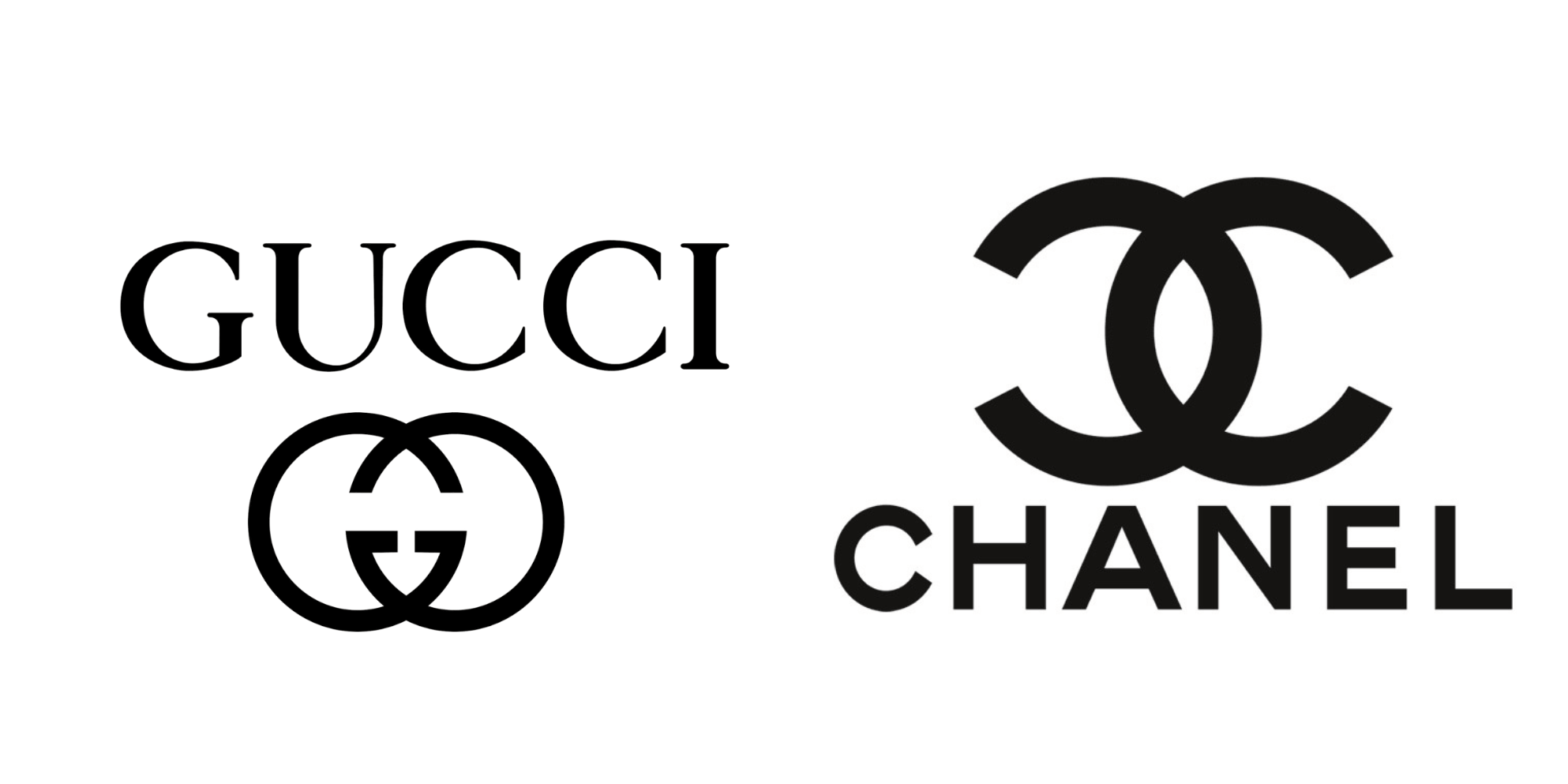
Gray
That is another tricky color you will mostly see as a background for texts and logos. However, the minimalist trend brought gray back into the picture, with more and more startups now including a variation of this color in their brand color palette.
But why is gray so tricky? Considering it has neither hue nor saturation, it is easy to make any text on a gray background hard to read and digest, which could harm your clients’ perceptions.
Red
There’s a lot we could say about the meaning and emotions this color provokes in people. The complexity of the color red comes from the mixed signals it is emitting. While it screams passion at the top of its lungs, it is also considered a little aggressive and depicts feelings of anger or danger.
Some companies entirely avoid using color in their brand color palette. Others use it as a secondary color to highlight the importance of a specific text and point the audience’s attention toward it. Yet, we can all think about the brand that has redefined the symbolism that red holds.
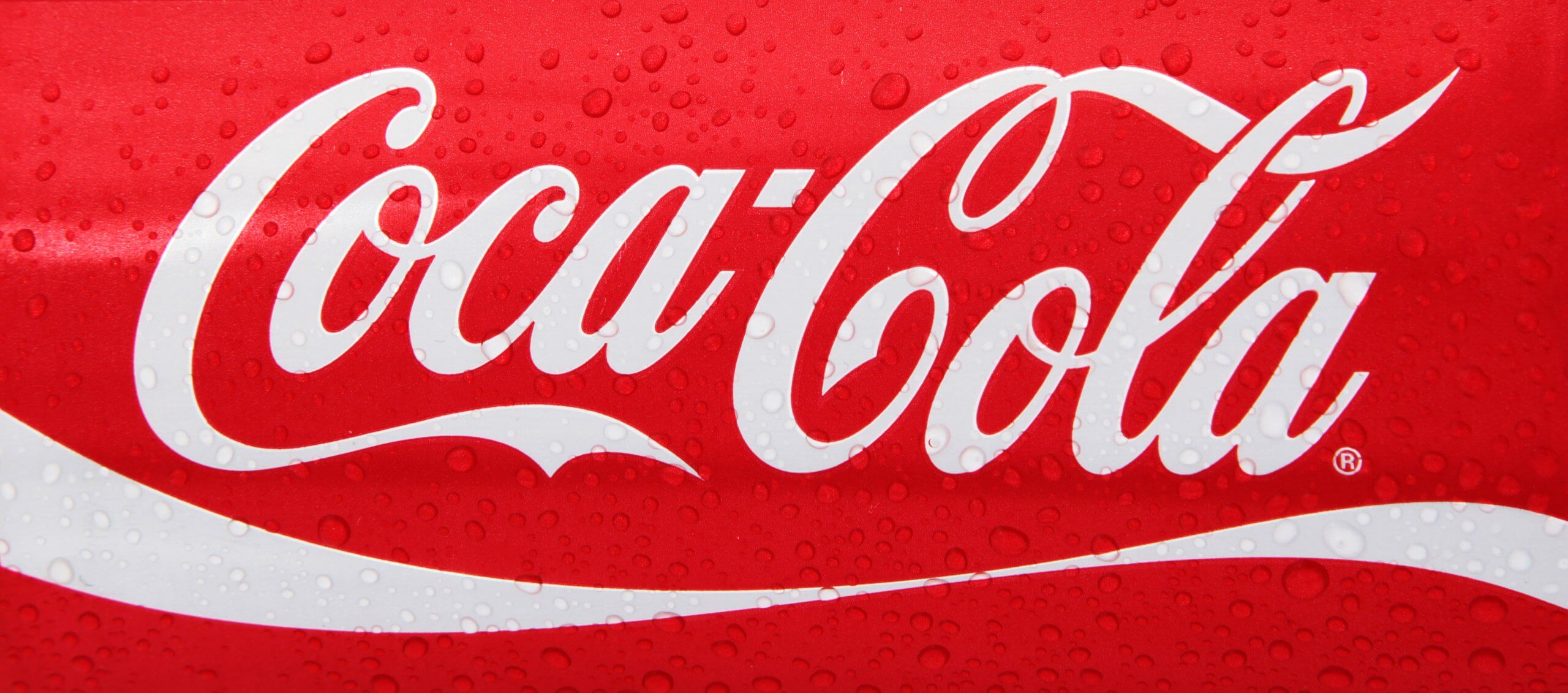
Yes, it is Coca-Cola we have in mind. During its long journey on the market, the brand successfully drew this image in our minds that their brand is all about sharing feelings of excitement, happiness, love, and togetherness. So that makes us wonder – do we now associate the color red with these feelings and emotions? Or do we only think that it is precisely that specific shade of red that represents them?
The answers to these questions don’t matter at the moment. However, the moral of the example is that if you are persistent enough, even if you’ve picked a color that represents the exact opposite of the emotions you are trying to evoke, you have a chance of turning things around and succeeding.
Orange
One of the strongest colors that evoke feelings of happiness and enthusiasm is orange. It’s a welcoming and energizing color that often serves as a primary color for CTA messages. Its adventurous nature is full of vitality and makes it a perfect choice for brands that need to convey those feelings.
Orange has a close resemblance to the color red, but it lacks the connection with passion and anger the latter has. Thanks to this balanced energy, many brands pick it instead of the color red.
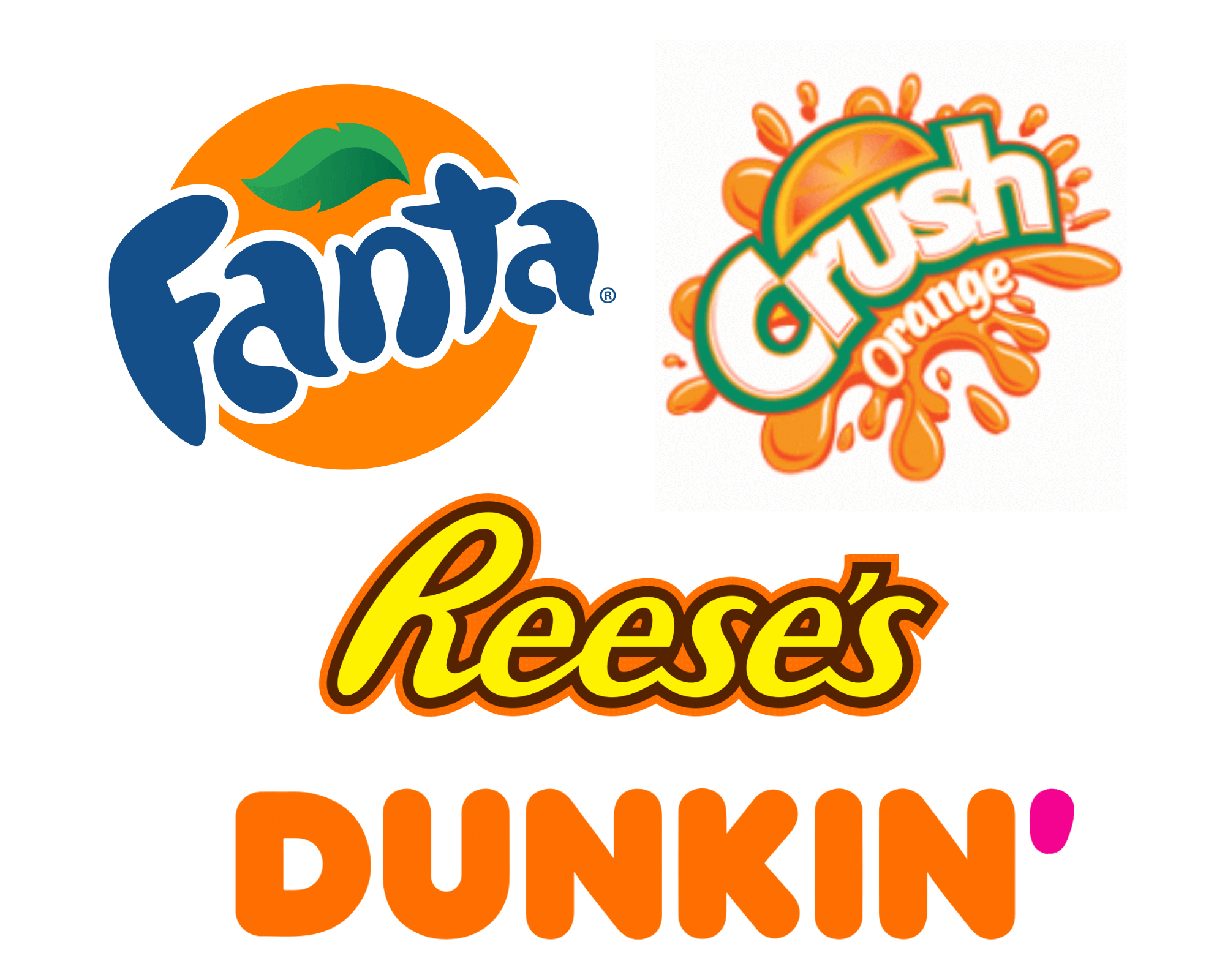
Companies from various industries use this color in their logos, but the food and beverage industries seem particularly keen on it. Small and big brands like Fanta, Crush (Fanta’s competitor), Dunkin’, and Reese rely on the orange color to convey their messages.
Contrary to the color’s bold feeling of excitement, financial brands like Mastercard and Bitcoin use orange in their logos to convey ideas of progression, innovation, and vitality.
And although Amazon’s logo is primarily black, that orange arrow that shows customers they can find products from “A” to “Z” and resembles a smile adds to the final look of the logo we are all so familiar with.
Yellow
Another attention-grabbing color is yellow. The color of sunshine we associate with laughter, hope, and generally good vibes. Its brightness and cheerfulness make it a good choice for brands that want to appear fun, affordable, and accessible to their audiences.
Just like orange, the yellow color is widely used in various industries. McDonald’s, Subway, Denny’s, SunChips, and Lay’s are all representative companies from the food industry, and from what we can see, they proudly incorporate yellow in their brands.
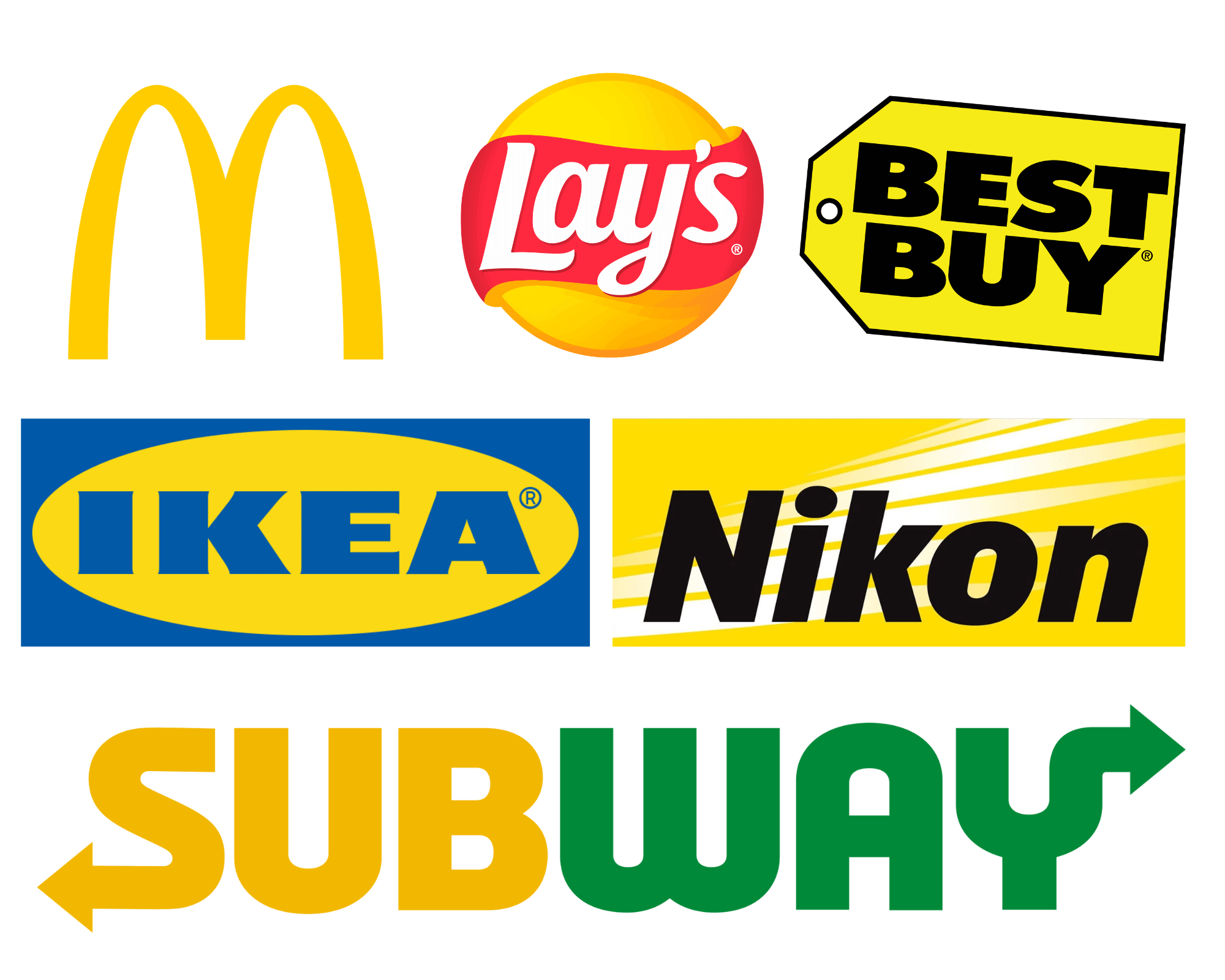
We can also see companies like Ikea, Best Buy, Post-it, and Nikon use yellow in their logos to appear more friendly and appealing to their customer groups.
Despite its positive associations, the color can be too jarring for the average person. That’s why you will see that the majority of famous companies that use yellow in their color palette don’t use it as their primary color but rather as a complementary one.
Blue
This one doesn’t need much introduction. The trustworthy color as we know it, there’s something about the color blue’s pigments that has a calming effect on our brains.
The cool thing about the color is that each shade evokes different feelings. Lighter shades make us feel all relaxed, while darker ones give us a professional vibe.
It is generally a color you can’t go wrong with, as it appeals to a wide demographic – young, old, regardless of gender. Giving that sense of stability will make people trust your brand more easily.
The list of popular (and not so famous yet) brands using blue for their logo or as a primary color in their palette can go on forever.
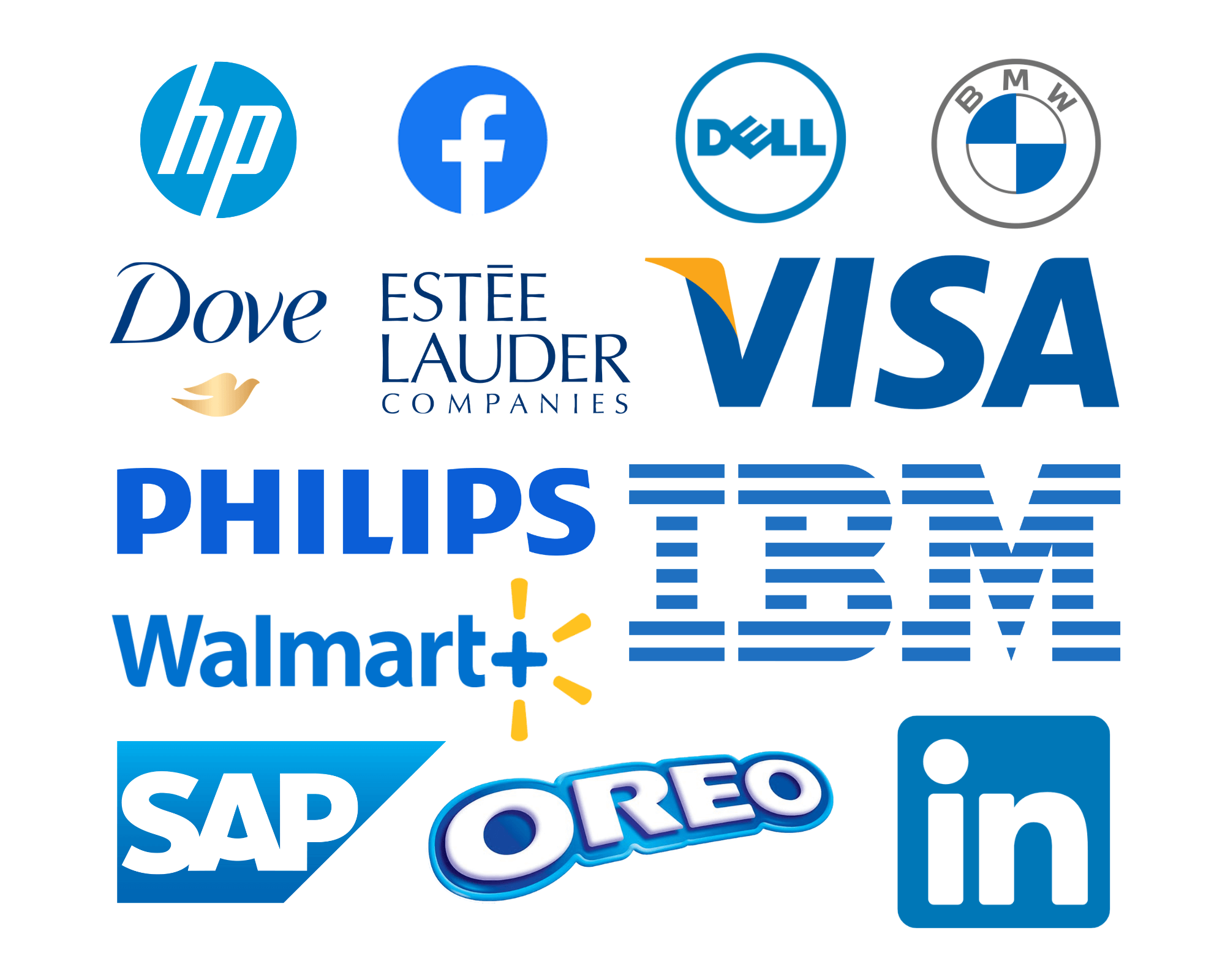
If you had 5 seconds to name a brand with a blue-colored logo, the first thing that would come to mind is most likely Facebook. Not once has the company changed its colors, and despite its brand evolution, the blue-colored logo is still its most recognizable symbol.
Probably the most widely distributed color, it appears in the logos of companies of many different industries. For instance:
- Beauty Industry – Dove, Estee Lauder.
- Transportation Industry – BMW, Subaru, Hyundai, Ford.
- Technological Industry – Dell, IBM, Samsung, General Electronics, Philips, SAP, HP.
- Retail Industry – Walmart, Pampers.
- Food and Beverage Industry – Oreo, Pepsi.
- Financial Industry – PayPal, Visa, American Express, Allianz.
- Social Media Platforms – Facebook, Twitter, Skype, LinkedIn.
Green
Two things come to mind when we think of the color green – money and nature. However, the color represents much more than that. It is a soothing color that also symbolizes health and new beginnings. Its calming abilities make us hopeful for the new possibilities a brand using the color in its palette can create for us.
That’s not all. Depending on the shade, the color can also be seen as stimulating, making a person feel motivated and inspired.
It is ideal for brands that wish to use it to highlight their environmentally friendly, natural side. For instance, in the food and beauty industries. It is becoming more and more significant for a brand to be perceived as eco-friendly, sustainable, and natural.
Green, on the other hand, is also related to envy and greed. Depending on the brand’s reputation among the general public, the color’s connection to money can be positive and negative.
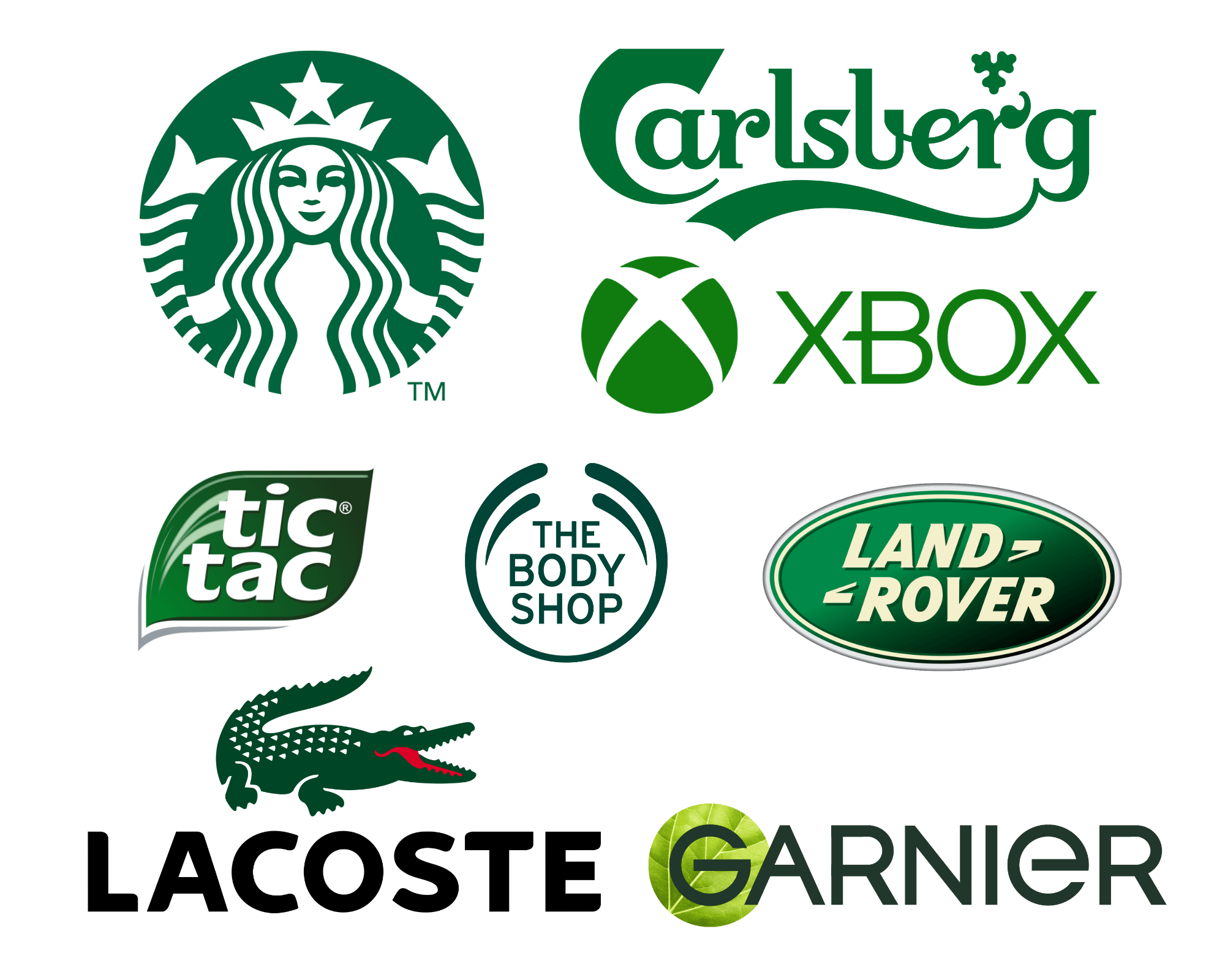
Many businesses have made use of green in their startup branding. Once again, they are fairly spread among different industries rather than being exclusive to any one of them. For illustration:
- Beauty Industry – Garnier, The Body Shop.
- Transportation Industry – Land Rover, John Deere.
- Technological Industry – Acer, Android, Nvidia, Xbox.
- Retail Industry – Lacoste.
- Food and Beverage Industry – Starbucks, Sprite, 7UP, Subway, Carlsberg, Heineken, Tic Tac, Whole Foods.
- Social media and stream Industry – Spotify, WhatsApp, Hulu.
Purple
Although purple is not typically a fan-favorite color for new brands, it actually has a certain allure. For centuries this color has been a preferred option for royals and wealthy individuals from all over the world. That and because it rarely occurs in nature might be among the reasons people often overlook it.
It represents mystery, rarity, luxury, wisdom, spirituality, and originality. Often extravagant, purple is not a color that would fit any brand’s identity. Depending on how well you leverage it, it can either make or break your brand.
While the color lacks the popularity of the green and blue ones, some brands have successfully leveraged it in their identities.
Yahoo! is probably the most famous brand that uses purple among its primary colors. The food industry’s valuable contributors – Milka and Taco Bell – appear to have done a fantastic job of incorporating purple into their logos. Lighter purple shades are used in both instances to give the businesses’ aesthetics a community-driven feel.
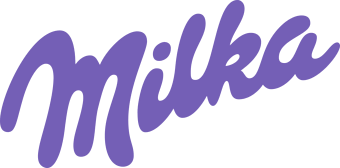
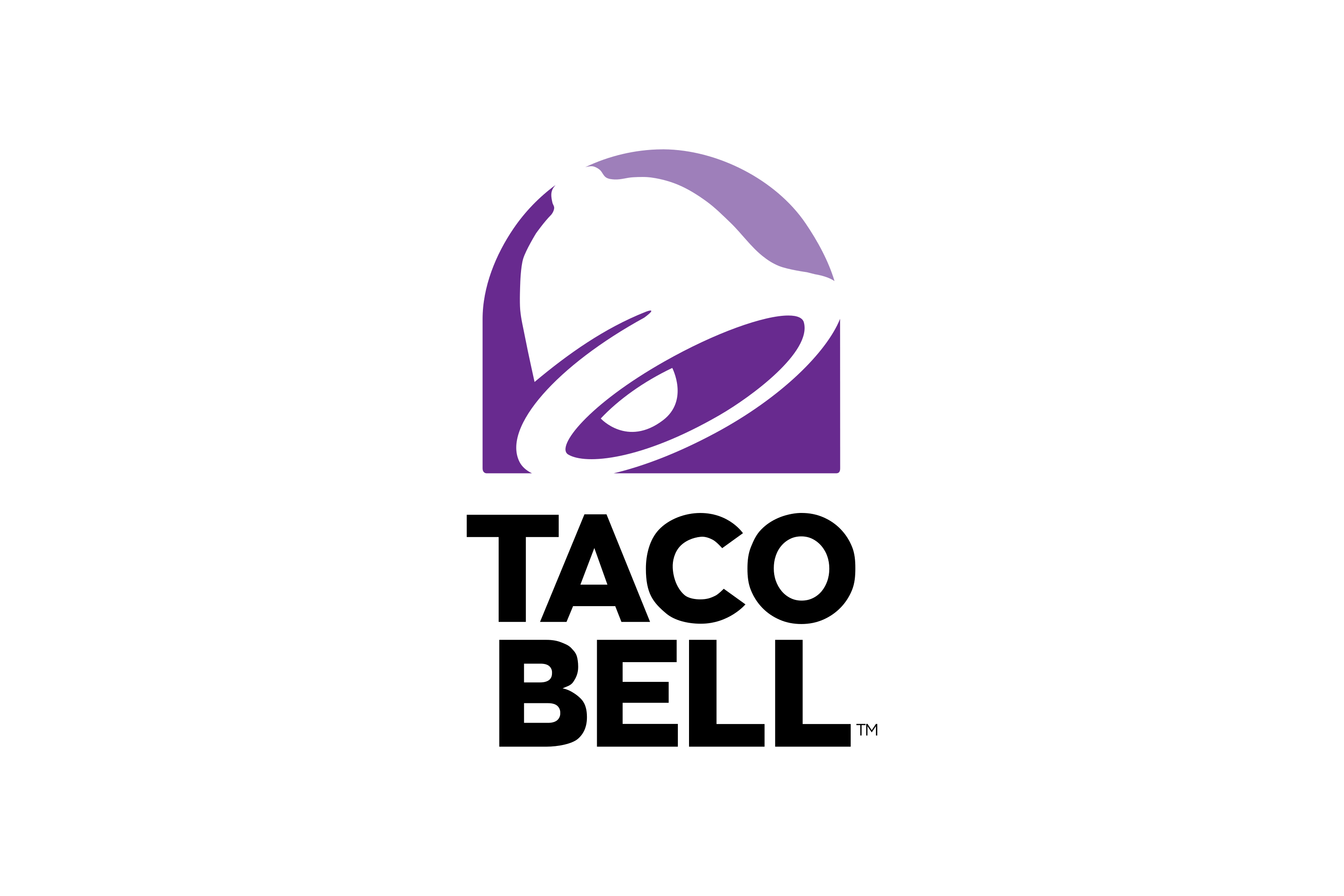
Graphics and Pictures for Your Startup Branding
Now that you have your primary and secondary colors picked, it’s time to dive even deeper into the aesthetics of your brand. The graphics and images you use will encompass all of your brand elements. That’s why it’s essential to decide on a style of editing you will follow. You can’t have moody edited photos on your Instagram account and light and airy edited ones on your website.
It might not sound like a big deal, but it shows a lack of cohesiveness and consistency on more than one level. Pick a style of editing you enjoy. What you choose has to correspond with your brand identity and the mood you want to invoke in your audience, and then follow it on all your platforms, website, and marketing campaigns.
Slogan
Not all brands need a catchphrase. But those that incorporate a slogan into their identity are one bit more recognizable than those that don’t. If you think of something short, good, catchy, and attention-grabbing that describes your brand’s purpose in a few unique words, you are already one step ahead of your competitors.
You can use a slogan in various marketing materials, including commercials, flyers, campaigns, etc. But the best thing about a good slogan is that it always gets into the heads of people.
And if you think it hasn’t happened to you, just recall Nike’s good old “Just do it.” or McDonald’s “I’m lovin’ it.”
How to Create a Good Startup Brand Slogan?
Want to come up with a good slogan for your new brand? Here’s what you should do:
- Make it recognizable – A slogan should be easy to digest and comprehend by most people. If people don’t understand your jingle, ditch it and think of something else
- Let it communicate your benefits – McDonald’s slogan has been successful for many years because it tells you that its food is good. Show your audience what they will get out of your brand with your slogan
- Make it inspirational– Nike’s “Just do it” and Adidas’ “Impossible is nothing” motivate people to improve by showing them that they can do it using their products
Startup Brand Positioning Elements
Now that we’ve covered the elements comprising a good brand identity, it is time we do the same with brand positioning.
Target Market & Audience
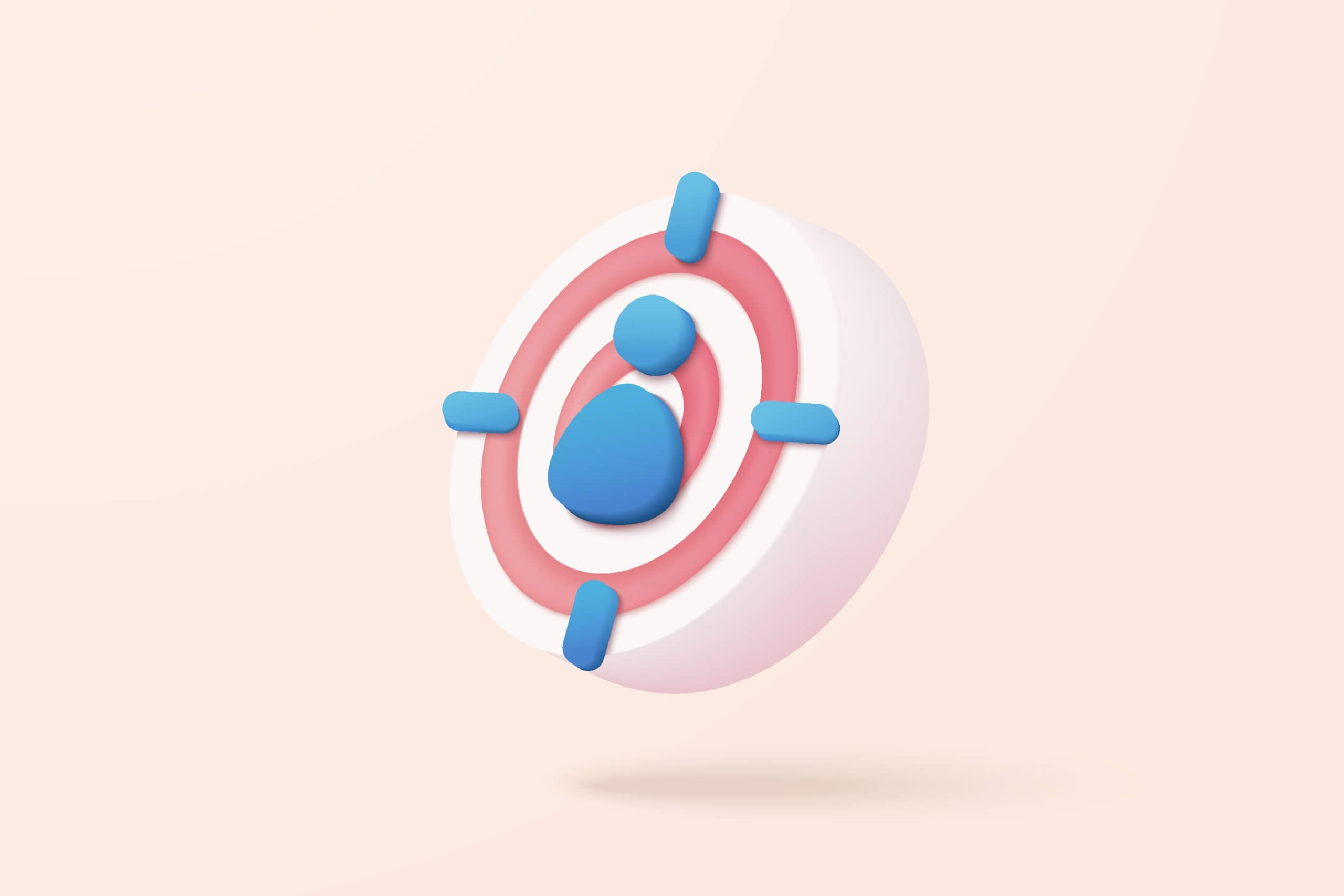
We will never get tired of repeating it, so the sooner you learn it, the better – No brand can withstand the market’s constant changes without having a target audience. You can’t go round offering your product or services to random people with no goal whatsoever. That never works.
Take your time to define a target audience because they will care most about what you have to offer. To define a target audience, focus on gathering demographic and psychographic information. That includes geography, age, gender, and in some cases, marital status. You need to know everything about consumer behavior and purchasing decisions.
Buyer Persona
Next, you can take it further by defining an ideal customer profile, also known as a buyer persona. Such semi-fictional representations of your ideal customers (based on data and research) can help you better communicate with your audience or even give better selling propositions.

They will also help you attract high-value leads. Wonder why you need them? They are more likely to engage with your brand long-term.
How to Create a Buyer Persona?
First things first – Who will create the buyer persona? Whether it’s a whole team or a single person, let it be someone who communicates regularly with your clients.
What’s next?
Look at your stats – how do your customers consume your content? What you should be looking for are patterns that differentiate their behavior. After you’ve digested all the raw data and analyses, you can go a little extra and give more life to your persona.
You can create your template where you can fill in all essential information, starting from their demographics. Include information about what you imagine their background is – job, career path, current lifestyle, dream lifestyle, family status, etc.
Every customer has some pains that need to be solved. Think about why your potential customers might require your products and services and use them to describe the challenges they might face before they get your products.
Your buyer persona should basically look like your dream customer. The more information you include about them, the easier it will be for you to communicate with your audience. By doing this, you will better understand your audience’s goals, objectives, motivations, sources of inspiration, etc.
Competitive Analysis
Analyzing your competition is an essential step that will help you find new opportunities to better your brand. Competitive analysis is not a one-time thing. It should be done consistently once every other month.

How to Do a Competitive Analysis?
The first step is to analyze your niche and products/services. You can start there and look for your direct competitors. These organizations operate in the same market segment and provide goods that are similar to yours.
Not all of your competitors will be that straightforward. Make every effort to identify indirect competitors. These are businesses that operate in the same market segment yet provide comparable services or goods. Once you’ve discovered your competitors, continue to study them. The more information you can get about their target markets, product features, and business operations, the better.
Identify their mistakes and think about how you can avoid making them. Use their mistakes to improve your business. Then it’s time to check how the changes you’ve made have helped you track your results.
How Brand Archetypes Can Help Your Startup
Did you know you could use psychology even more to your benefit when building your brand? Psychologist Carl Jung’s ideas of archetypes made it all possible.
What Are Archetypes?
According to Jung, archetypes are images we all share in our collective unconscious. Their meaning is universal across all cultures and often appears in our dreams, literature, and art.
So what’s that got to do with brand building?
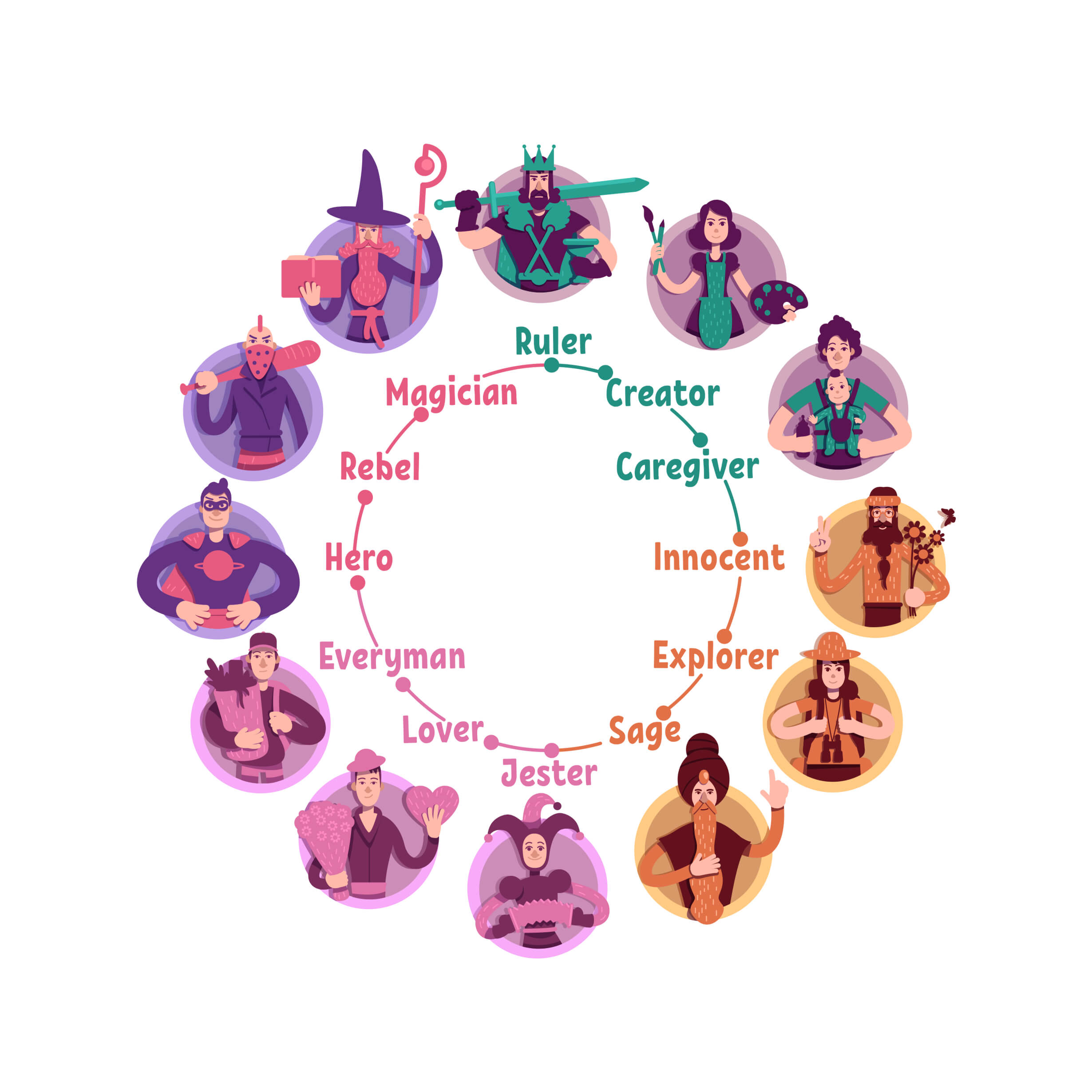
What Is a Startup Brand Archetype?
Derived from Jung’s original set of archetypes, brand archetypes as we know them today consist of 12 traits. Each archetype represents a brand’s value, behavior, and messages.
- Lover
- Explorer
- Creator
- Sage
- Innocent
- Caregiver
- Magician
- Jester
- Hero
- Ruler
- Regular guy
- Rebel
While we won’t go into much detail, let’s see what each type represents and how you can use them to develop your brand more easily.
The Lover
Just as the name suggests, this archetype is all lovey-dovey. Motivated by desire, brands from this archetype are sensual and empathetic in their efforts to be more appealing to their audiences.
They aim to convey their passion and establish a strong connection with the viewers. Feeling ignored or invisible by their audiences is among their biggest fears. After all, they strive to enhance the specialness and sensuality of people’s lives.
Typical examples of brands that are Lovers are Victoria’s Secret and Chanel.
The Explorer

Does your brand represent independent thinkers that strive to find fulfillment through discovery, exploration, and new experiences? If yes, then your archetype is an explorer. Often unique in their desire to overcome the mainstream flow, explorer brands are not afraid to push themselves into uncertain situations to broaden their horizons.
They want to help their audiences to feel excited, challenged, and fulfilled. However, doing all that by being safe and in unison with everyone else is not their way.
NASA and National Geographic are prominent Explorer brands with their constant innovation and ideas on how to change the world with their actions.
The Creator

Although it is another non-conformist brand archetype, the Creator brands are all about visualizing and creating products that aim to enrich the consumers’ lives. They believe everyone is a creator in their special way and empower their audiences to unleash their creativity through the experiences they create or the products and services they offer.
Not afraid to express themselves even if it means standing alone Creator brands hate indifference and stagnation. Apple, Adobe, and GoPro are classical Creators, and they ain’t afraid to show it.
The Sage
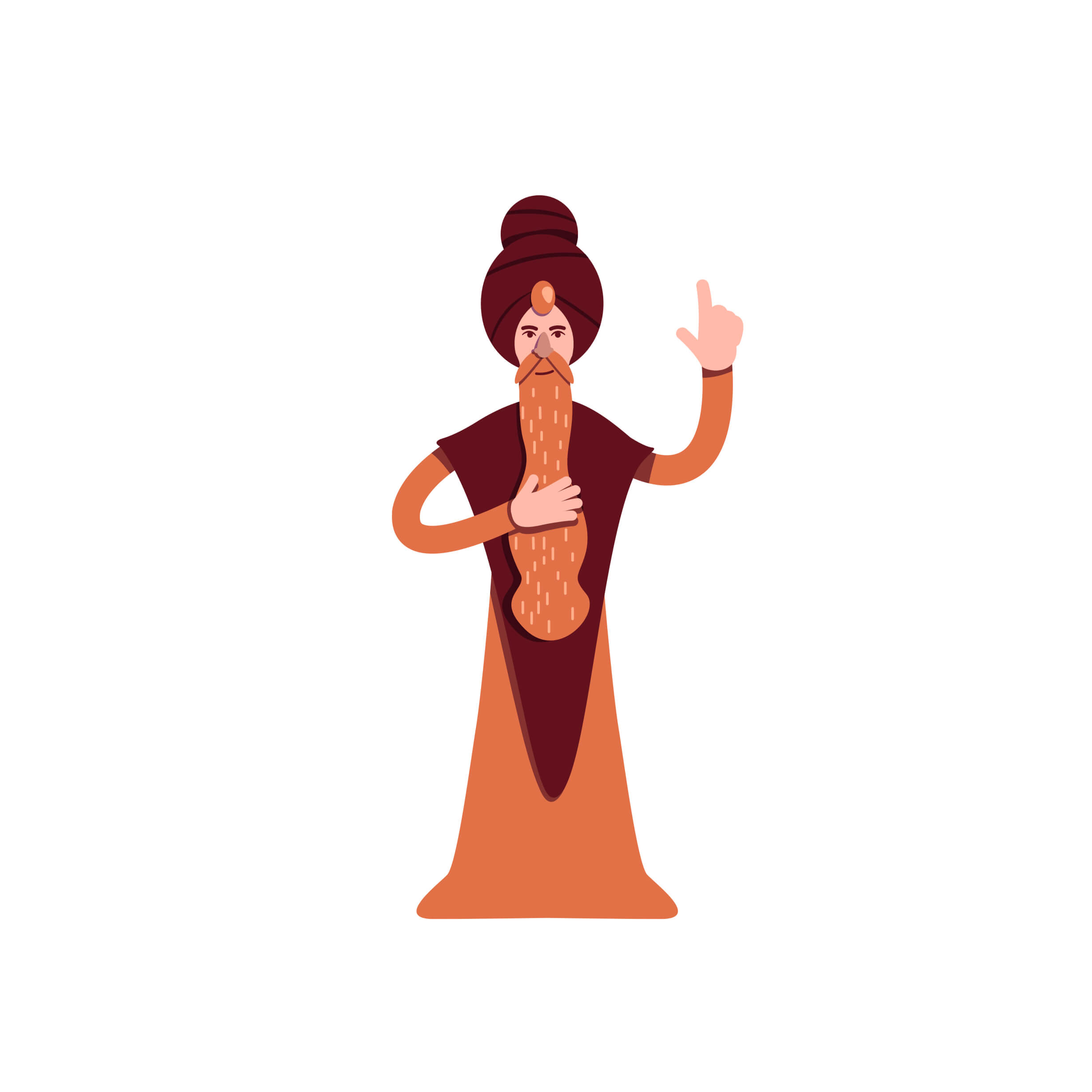
If your brand distributes the belief that the truth will set you free, you are a proud representative of the Sage archetype. Life-long learners, such brands may not be active revolutionaries, but they do their best to contribute to society’s knowledge. They consider sharing valuable information with others their mission and don’t believe in ignorance, misinformation, and let alone lies.
Typical Sages are news media and other platforms of this type, including Google, TED, and BBC.
The Innocent

Your brand is all “positive vibes only”? Then you are one of the Innocents. Brands like yours are all about spreading joy and happiness as much as possible. You are optimistic and charmingly believe that the glass is half full. Relying on your good virtues, you never speak ill of your competitors and don’t get involved in things that may harm anyone.
Other brands like you are Dove, McDonald’s, and Coca-Cola.
The Caregiver

Driven by their compassion, Caregivers are here to serve and help others. All they want to do is help those who are less fortunate. Brands that share the Caregiver archetype come from the nursing and charity sectors and sometimes even the educational industry. Brands that are proud Caregivers are Unicef and Pampers.
The Magician

True problem-solvers, the Magician brands deal with their audiences’ pains by offering them new thrilling products and experiences. Those brands hate stagnation and repetition, and you will often see them pampering their customers in the most magical of ways. They have charisma and huge imagination that help them find new ways to help their customers have the best experience possible.
Wondering which brand is the biggest Magician of all? That’s Disney.
The Jester

Making audiences smile in a playful, humorous way is all Jesters represent. They avoid seriousness and negativity and always maintain a jocular stance in front of their audience. Old Spice’s witty commercials demonstrate to us the brand’s jester-like nature.
The Hero

Like the Heroes they are, representatives of this archetype strive to make a difference with their hard work. Proud that their efforts set them apart, they inspire others to do the same. Honorable and brave, those brands fight against injustice, weakness, and incompetence. You’ve probably guessed already that brands like Nike and Adidas always fall into this category.
The Ruler
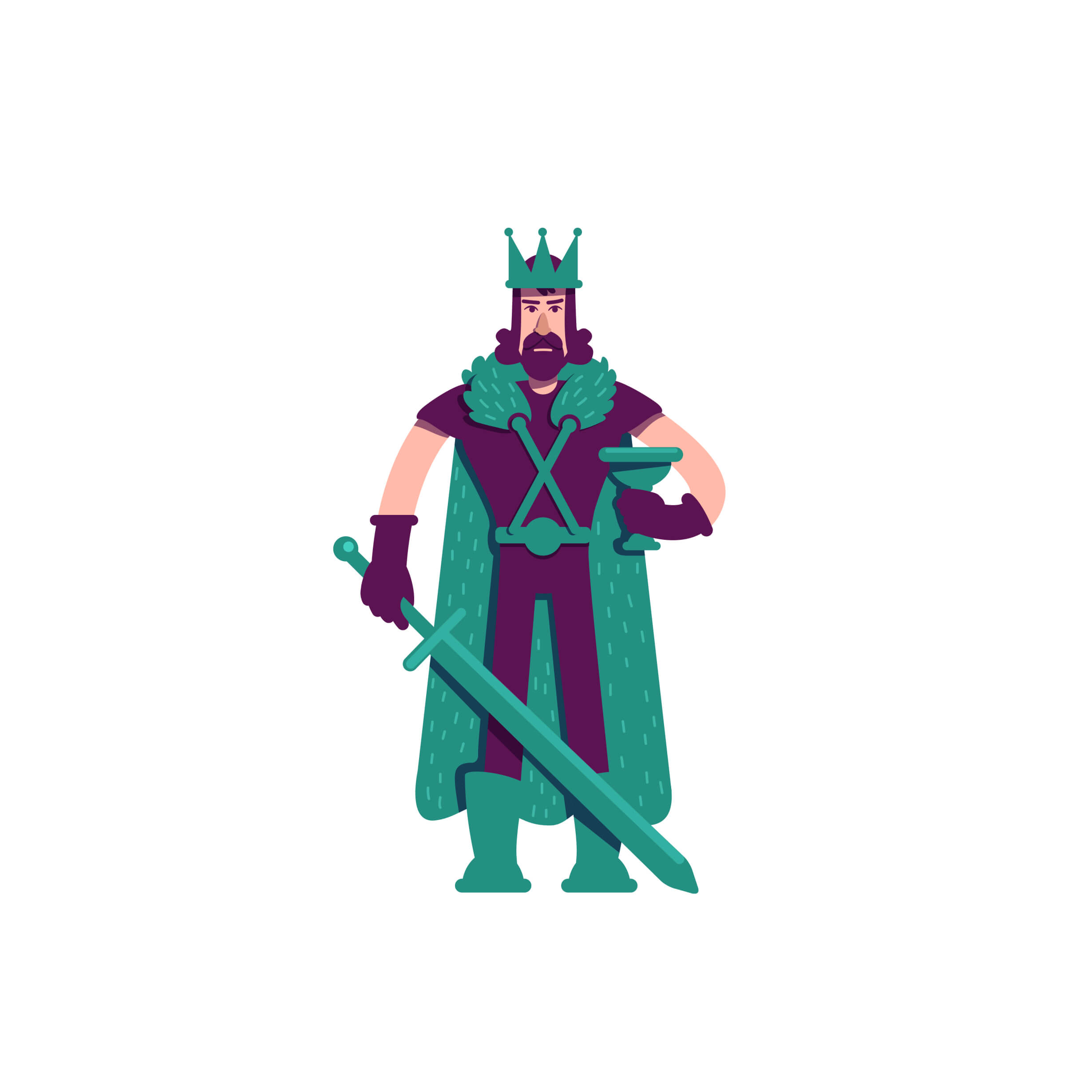
Confident in what they do, the Ruler brands have quite a dominant personality, always wanting to set the rules and adhere to them. Such brands have strong leadership skills, and the audiences like them because of the trustworthiness and stability they project. We probably won’t surprise anyone by saying that brands like Hugo Boss, Rolex, and Rolls Royce are all Rulers.
The Regular Guy

Contrary to the Ruler, the Everyman or the Regular Guy is easily approachable and quite unpretentious. They want to belong to a community and always be liked by the audience. Therefore, they avoid standing out at all costs. Dependable on others, these brands are all about equality and inclusivity. Some examples include Ikea and eBay.
The Rebel

Also known as the Outlaw, the Rebel is an archetype that consists of brands that disrupt their industries and live to challenge the status quo. Taking risks is no issue, especially if it will lead to the creation of something new and unique. Definitely, they are not everyone’s favorite, yet they gather independent audiences that grow a strong bond with them. Harley Davidson and Diesel are prominent examples of the Rebel archetype.
How to Cultivate a Timeless Startup Branding From Scratch
Here’s what you have done so far:
- You’ve learned which archetype best describes your brand
- You’ve identified your goals, values, mission, and proposition
- You’ve created your brand and visual identity so that you are consistent
So what’s next?
Develop an Intuitive Website

Every business, no exception, needs a fast, secure and intuitive website. When it comes to websites, the more user-friendly they are, the more people will use them. You might have made the best design choices or picked the best color schemes, yet if your website is not easy to navigate, your visitors will be quick to leave it.
So when developing your website, no matter what web design trends you decide to follow, make sure it is intuitive and doesn’t disrupt the customers’ journey.
Be creative with your landing and home pages – those are the first things people will see. Cutting-edge and intuitive design might not be enough to be presentable, respectable, and liked. You need more. You need to…
Give Your Startup Branding Value Through Content
Even if you have an intuitive design, if your message is not clear, engaging, and correctly written, people will leave anyway. Yes, it might take a bit longer for that to happen, but the final result will be the same nonetheless: little to no leads and conversions.
Considering how crucial providing quality information is, it shouldn’t take you by surprise that content marketing is a whole other niche. Whether for blog posts, web copies, or social media posts, how you play with your words will make or break your brand. Remember what we talked about the tone of voice? Now is the time to implement that in your texts.
In no way is content marketing limited only to your abilities to handle words and write texts. Content marketing has many shapes and forms, including taking pictures and videos. Yet you need blog posts and similar types of tools to enlarge your audience.
Depending on your niche, people will require more information about what to do with your products, how to use them, etc. By maintaining an active blog section, you give them just that – information, knowledge, and ideas.
However, no matter how much time you spend writing copies, it won’t be enough unless…
Pay Attention to Your SEO
Optimizing your website for search engines is your next best step. Search engines won’t show your content if it is not good, but there are things you can do to help your content become better. Keywords are one way to differentiate your content from all other stuff people can find online. Using them, you show the engines that the content you’ve posted will answer people’s most searched queries.
Ranking higher on the search engines, especially Google, is by no means an easy game. Keyword research is just one of the things that SEO experts deal with. They also deal with stuff like performing audits, optimizing metadata, tracking bounce rates, improving website speed, and so forth.
Stepping up your SEO marketing game is of great importance. Yet there’s one more thing you need to do to help your startup branding…
Set Up Your Social Media Accounts
All your startup branding efforts will go to waste if you are not active on your social media accounts. Start by filtering the platforms that correspond best with your niche and audience and quickly set up your accounts. Then start posting. Don’t forget to follow your brand’s visual identity. Otherwise, you’ll end up with a whole bunch of posts that don’t show who you are and what you represent.
Will posting randomly with no strategy whatsoever work? Sadly, no. To develop an effective social media strategy for your business, you will need to analyze a lot of data. But going to be worth it. You need to know when to post, what formats work best for you and how to communicate with your audience to get the best results.
How Reputation Management Helps Startup Brand Building

As a startup brand, you will need reviews and recommendations to get your business going. If what you are offering is good, people will be more than happy to share their thoughts, feelings, and experience. Yet the same applies if they are not as satisfied with your services as you would initially expect.
Learning how to manage your reputation and handle negative reviews as well as you do positive ones will be more valuable than you think. To cover the basics:
Always address customers’ issues. Take accountability for your (lack of) actions, services, or products, and don’t leave them hanging. Even if you think your critique is unfair, respond. People always look for reviews online before they purchase a product. If they encounter your socials and see a bunch of complaints, they will know something is wrong.
The same goes for the positive feedback. Always thank the customers for their reviews and the time they’ve taken to write them. It shows that you care about their opinions, and they feel more valued.
Whether you are dealing with good or bad feedback, always do it with kindness and respect. Your business depends on your customers.
Can You Take Care of Your Startup Branding Journey Alone?
Building a startup brand from scratch is way too difficult of a task for anyone to do alone. There are so many skills you need to attain. You have to become a spectacular:
- Data researcher
- Designer
- Writer
- Visual Content Producer
- Storyteller
- Social Media Manager
- SEO Specialist
- Communication Expert
Even if you have all those skills, it will take months, if not years, to do everything yourself. And with the industry constantly changing, unfortunately, you don’t have that time at your disposal. Nowadays, startups need to act fast. So don’t be afraid to ask for help.
Socialfix Can Help You Build the Skyrocketing Startup Branding Strategy You Need
Specializing in brand strategy and positioning, Socialfix can help you cultivate strong startup branding that can take over your industry. With a team of experts in all the right fields, we can help your startup business thrive by offering tailored solutions for your needs.
From cultivating your brand, designing your website, and doing your research, to writing your content, helping your ranking, and producing your visual content – we can do it all.
Don’t hesitate to contact us to book an appointment or ask for more information.
Wrapping Up
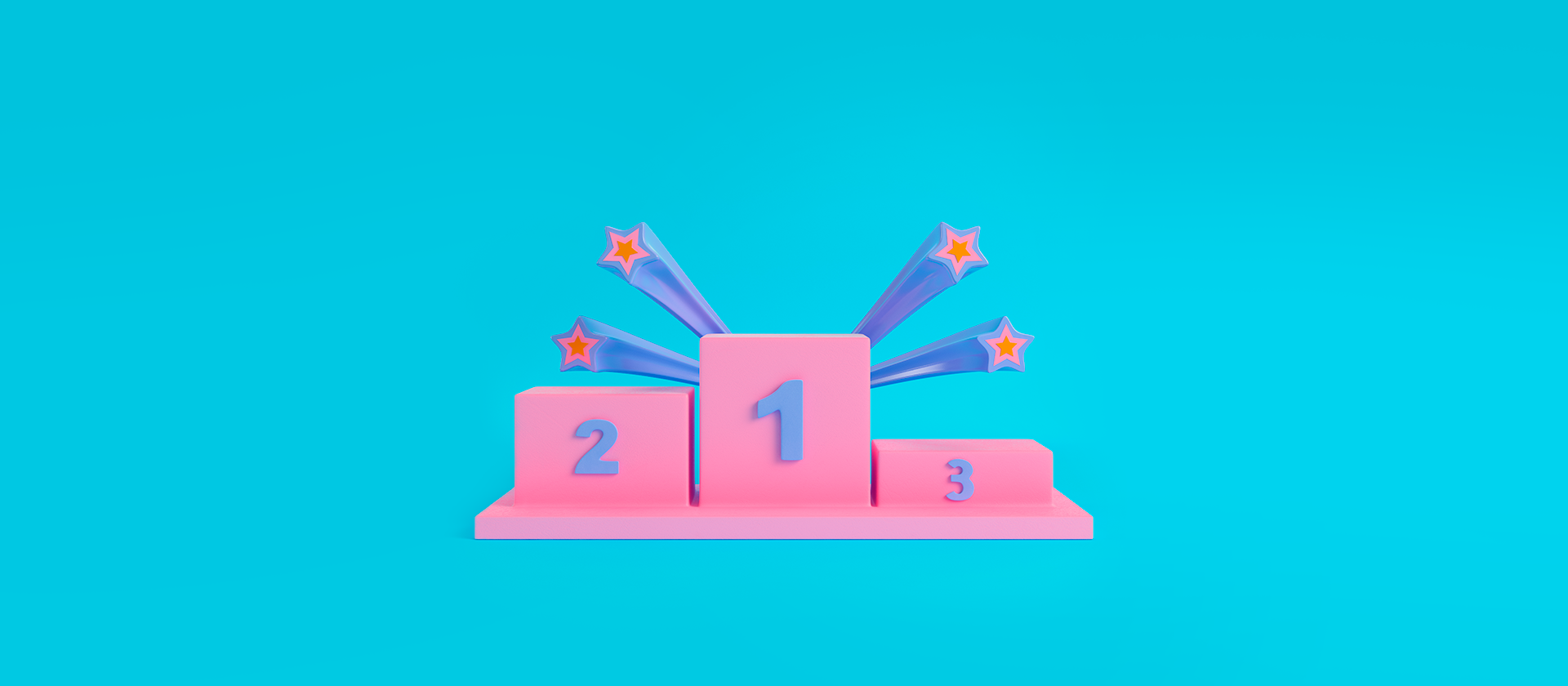
Brands are not going anywhere. They will continue to be the most powerful tool that sells businesses’ products, services, and offerings. Their purpose is to show who you are, what you stand for, and how you contribute to our society.
In an era where everyone can do everything digitally, we now need brands more than ever to show us businesses’ true identities. Companies with successfully cultivated brands continue to grow with them and stay on the market much longer than those who overlook the importance of brands.
Don’t make that mistake with your startup branding. No matter how difficult and time-consuming cultivating a brand is, it is worth it. Now that you have all the information, it is time to act.














